- Writing Courses


The Svalbard Maxi Taxi Tour: Get Ready for a Wild Ride!
By Dave Fox Longyearbyen, Svalbard, Norway
A dark van with tinted windows rumbles toward me down a bumpy, dirt road. The driver stops and opens the passenger side door. He’s a burly man with a shaved head; a bushy, gray beard; a striped T-shirt, and mirror sunglasses. I spot a gun by his feet.

“Ja,” I answer.
“You can sit in the front,” he says, switching languages.
I climb in.
“And where is Dave from?” he asks.
I hesitate for a moment because my answer’s a little weird. “I’m from America. I live in Singapore. And I speak Norwegian.”
Behind me, ten other passengers erupt into more laughter than seems warranted — until I realize it’s not my answer they’re cackling at. They’re laughing because on the way to pick me up, our driver, who looks like a cross between Santa Claus and a Hell’s Angel, has already wound them up with so many stories, he has put them in that giggly state of mind where they’ll laugh at anything.

As we drive toward the center of Longyearbyen, Viggo starts our tour with a few statistics. The capital of the Svalbard Archipelago has 2,095 residents from 43 countries.
“It’s super international here,” he says.
Svalbard officially became part of Norway in 1920 when the Svalbard Treaty was signed, but the treaty included a stipulation that citizens of all 40 signatory nations could live there.

The average age in Longyearbyen is 36, Viggo says. Due to its location at 78 degrees north latitude (830 miles / 1,338 kilomters south of the North Pole), the town endures four months of perpetual darkness each year.
It’s a special tax-free zone. So booze is cheap and winters are long, and Viggo chuckles that this leads to a popular leisure activity: “It’s the perfect place to become a mommy or daddy.”
At the spot where John Munro Longyear launched the first year-round settlement in 1906, Viggo fills us in on some history.
The first confirmed discovery of Svalbard happened in 1596 by Willem Barentsz, a Dutchman searching for a northern shipping route between the Atlantic and Pacific Oceans. In the early 1600s, the islands became a base for whalers and walrus hunters. These settlements were temporary, however, with few people staying through the arctic winter.
In 1905, Longyear showed up on a cruise ship. An American coal-mining mogul, Longyear saw dollar signs in Svalbard’s coal. He returned the following summer with workers and equipment to launch a mining company.
In 1916, the Norwegian company, Store Norske, set up shop and bought Longyear out. Four years later, the Svalbard Treaty gave Norway sovereignty. The treaty declared the islands a demilitarized zone – which strikes me as ironic, because you’re not allowed to leave downtown Longyearbyen without a gun.

The polar bear signs are a popular tourist attraction, but they’re no gimmick. Without a weapon, it’s illegal to go beyond them. Svalbard is the only place in Norway that has polar bears. Tourists who have strayed beyond the allowed boundaries have been mauled and eaten.
(During my four days in Svalbard, I never did see a polar bear. In the summer months, they head out to ice flows where they can fish; however, if they get stuck on land in those months, chances are they’re hungry.)
Back on the road, we pass a couple of Svalbard’s closed-down mines, and Viggo talks about the dangers of the industry. Over the years, 769 people have died in Svalbard mining accidents, he says. In one particularly violent explosion, the carcass of a horse was found nearly two kilometers away — blown through the air by the massive force.
Miners on Svalbard feel a solidarity with miners worldwide, Viggo says, particularly when there are accidents.
“In one way, miners are one big family. It doesn’t matter where they die. It’s equally sad every time.”
We chug onward, up a steep hill to the EISCAT radar station where scientists are studying the magnetic interaction between the sun and the earth, and where we get a terrific view of Adventsdalen (“Advent Valley”) and distant glaciers on Isfjorden (“The Ice Fjord”).

We also stop at Svalbard’s Global Seed Vault , where more than 700,000 types of seeds from around the world are stored in a bunker beneath the permafrost, so that plant species can be restored if they are ever lost due to natural disasters or wars.
Heading back into town, we pass the Longyearbyen School, which has around 280 students.
“We have Norway’s best teachers,” Viggo says. “Children in this school have absolutely everything.”
Absolutely everything? Well, maybe not tropical weather or coconut palms, but the northernmost school in the world has a lot to keep students occupied – a swimming hall, a solarium, and a gym (which Viggo calls the “Tarzan Factory”), a shooting range with electronic guns, a hockey rink, and a tow rope to transport kids up a sledding hill at recess.
“A teacher stands in the road with a rifle on polar bear patrol,” Viggo mentions.
In our two-hour spin around the outskirts of Longyearbyen, he keep us laughing and riveted with story after story. It’s been a brilliant introduction to a place he clearly loves.
And I can tell he has many more tales to tell, but a flight is coming in. Viggo must switch from tour guide to taxi driver.
I’m okay with that. Now that I’ve gotten the lay of the land, I’m ready for bigger adventures.
(More stories from Svalbard are coming soon!)
Svalbard Maxi Taxi offers daily tours at 10 a.m. and 4 p.m. The afternoon tour tends to be less rushed due to incoming flight schedules. Space is limited to 12 people, so booking in advance is recommended. For more info, visit taxiguiden.no or call +47 – 79 02 13 05 .
You may also be interested in
- More from Svalbard
- Fossil Hunting in Svalbard
- Welcome to Svalbard: The Northernmost Year-Round Settlement on the Planet
Leave a Reply
Name (required)
Mail (will not be published) (required)
XHTML: You can use these tags: <a href="" title=""> <abbr title=""> <acronym title=""> <b> <blockquote cite=""> <cite> <code> <del datetime=""> <em> <i> <q cite=""> <s> <strike> <strong>
Subscribe to my free newsletter
Writing and Life Coaching

If you’ve got big writing goals, dreams you want to achieve but you’re not sure how to get there, or if you’re struggling with something and you need help turning things around, Dave can help you create a path to more fulfilling and authentic life.
>> Personal Development & Expat Coaching
>> Writer Coaching
Online Workshops
Dave's online writing and travel courses get RAVE reviews! Follow the links below for special discounts!
- Travel Journaling: Capture your travel memories in words.
- Travel Writing & Publishing: Transform your journals into stories you can publish.
- Humor Writing: Professional humor tricks for writers, speakers, and other misfits.
- The Psychology of Writing 1: Overcome writer's block and write with confidence.
- The Psychology of Writing 2: Defeat distractions, stop procrastinating, and write!
- Deep Travel: Have adventures no guidebook can tell you about.
Books by Dave Fox

Details and Free Sample Chapters >>
Read Globejotting.com on Kindle! You can now download stories from Globejotting.com and read them on your Amazon Kindle device! Find Out More >>
Follow Globejotting

Almost All Categories
- Travel Tales & Tips
- Travel Journaling
- Humor Columns
- Random Outbursts
- Dave’s Books
- Writing Tips & Musings
- Online Writing Classes
- Share Your Stories
- Top Stories
- Expat Radio
- Guest Writers
- Life Coaching
- Personal Development
- Dave’s Books
- Copyright Dave Fox 2012
Longyearbyen in a nutshell - sightseeing with the local expert - Svalbard Buss og Taxi

Visit Website
Visit us on Facebook
Send us an e-mail
+47 79021305
Two-hour guided trip - The perfect way to get an overview of Longyearbyen. The driver tells us about the major local attractions and history of Longyearbyen. The tour goes near: the local mines, research, town, church and past the global seed vault. There are stops along the way for photography. In the dark period may also be lucky enough to experience the stunning northern lights. Reservations regarding alterations of route by bad weather.
Bookings may be made on www.visitsvalbard.com or in the reception of the hotels.
Available for wheelchair users. Contact us when booking.
- Access for wheelchairs
- Short hikes (1-4 hours)
10:00-12:00
Wednesday :
Source : Svalbard Reiseliv AS
Your recently viewed pages

Longyearbyen in a nutshell
Arranged by Svalbard Buss og Taxi
Two-hour guided trip – The perfect way to get an overview of Longyearbyen.
The driver tells us about the major local attractions and history of Longyearbyen. The tour goes near: the local mines, research, town, church and past the global seed vault.
There are stops along the way for photography. In the dark period may also be lucky enough to experience the stunning northern lights.
Reservations regarding alterations of route by bad weather. The trip takes about two hours. Language is Norwegian or English. 1-50 passengers. Size of the vehicle depends on how many people are participating. Daily departures at. 10:00 and 16:00. Pickup Location selected during booking.
NOK 385,- per person.
Duration: 2 hours

Difficulty:
Kontaktinfo, privacy overview.

Svalbard Travel Guide: Tips & Itinerary for First-Time Visitors
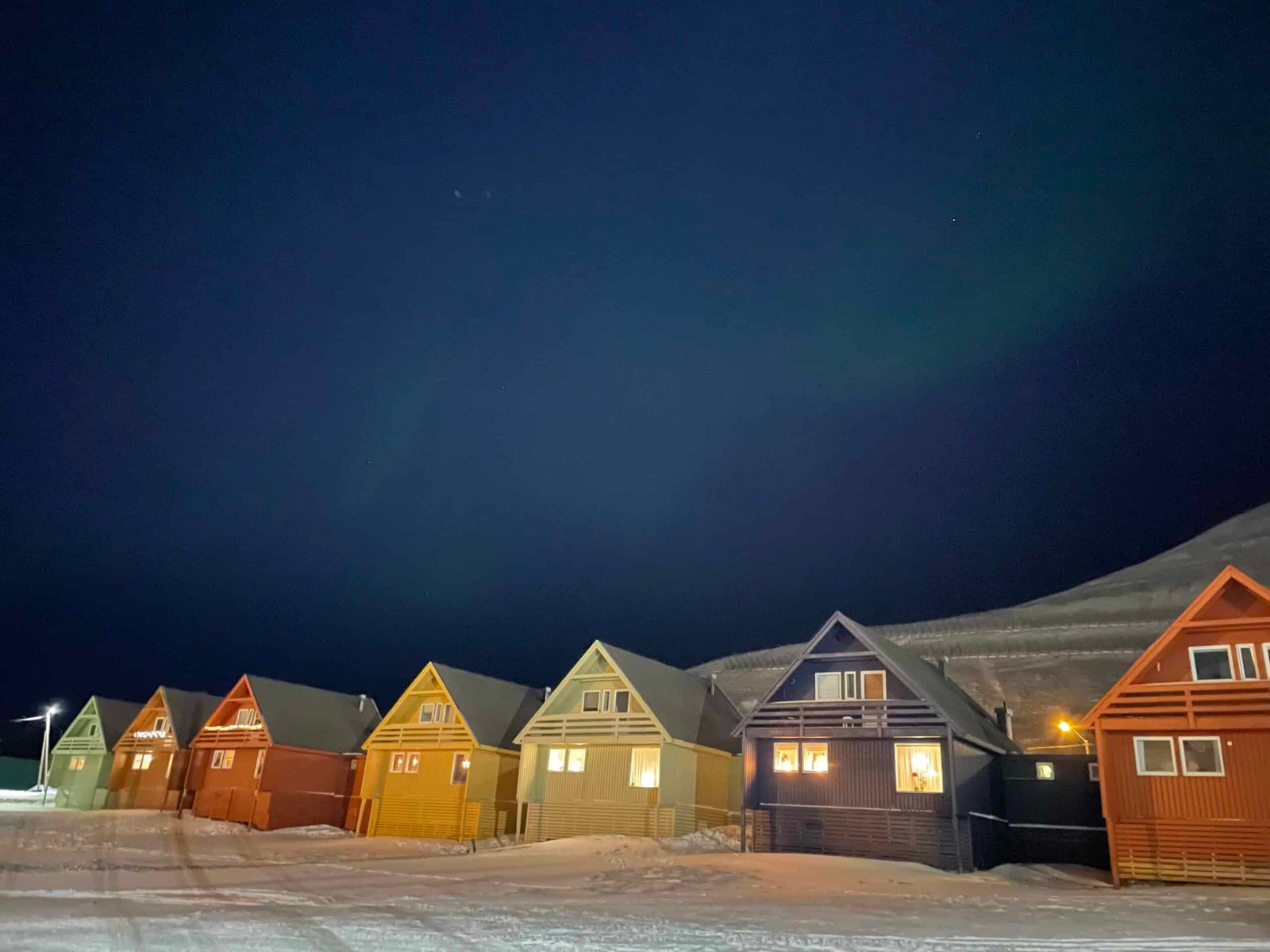
Hi there, welcome to Longyearbyen Svalbard , a place I have called home for the past 4 years. Through living in this Arctic wonderland, I’ve developed a profound understanding of outdoor adventures that I’m eager to share with you. I’ll provide you with the information and practical insights you need as you set off on this adventure to make sure you will have an incredibly immersive experience in Svalbard’s vast outdoors. I wrote a sample 5-day itinerary if you want to jump right off to it.
Key Tips For First-Time Visitors
When planning your first trip to Svalbard, there are several key tips to ensure you have a fulfilling and safe experience.
- Polar Bear Safety : Always travel with a guide or carry a firearm when venturing outside of Longyearbyen, as polar bear encounters are possible. Remember that polar bears are protected and should only be shot in direct life-threatening situations .
- Seasonal Considerations : Choose your visiting season based on what you want to experience. Summer (May-September) offers the midnight sun and relatively warmer weather, making it ideal for wildlife spotting and hiking. The polar night (October-February) is the time to see the Northern Lights, though they’re not guaranteed. Spring (March-April) is a transition period with the sun above the horizon, leading to noticeable changes in the environment .
- Clothing and Gear : Even in summer, Svalbard is cold, so pack warm clothes, including a jacket, hat, gloves, and winter shoes. Winter requires even more layers, and specific gear like a quality parka, thermal tights, legwarmers, sturdy boots, and mittens is essential. A headlamp is also recommended due to possible electricity blackouts .
- Transportation : Taxis are the best way to get around Longyearbyen, and there’s a bus service that operates around flight schedules. To explore other settlements like Barentsburg, you can travel by boat or snowmobile .
- Environmental Care : Svalbard has taken steps to reduce plastic waste, so you will see the efforts at many establishments. Visitors are encouraged to minimize their environmental footprint to help preserve the fragile Arctic ecosystem .
- Cultural and Historical Insights : To learn about Svalbard’s diverse history, from its dinosaur past to its mining era, a visit to the Svalbard Museum is highly recommended .
- Planning and Reservations : Book activities and dining in advance to avoid missing out, as spaces can be limited. This ensures you get to participate in the activities you desire and dine at the restaurants of your choice .
These tips are designed to help first-time visitors navigate the unique aspects of Svalbard and enjoy its many offerings responsibly and safely.
Introduction to Svalbard
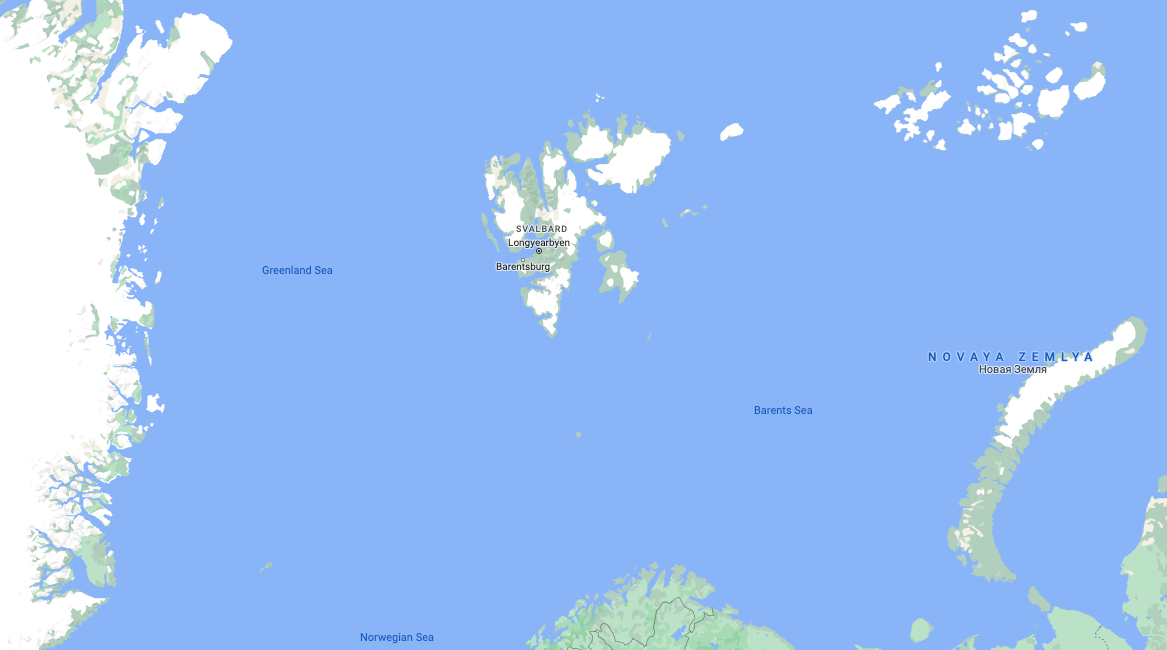
Svalbard is a Norwegian archipelago in the Arctic Ocean. It is in between mainland Norway and the North Pole. We are at 78degrees North. Around 1300km from the North Pole and is the world’s northernmost community with a population of 2596 as of Sep 2023 (both Ny Alesund and Longyearbyen).
Most of the residents are Norwegian but we have a very diverse community. Around 50 different nationalities live here and call this place home.
Svalbard is not just a place on a map; it’s an experience that defies expectations, where adventure isn’t just an option—it’s a way of life.
Why You Should Visit Svalbard
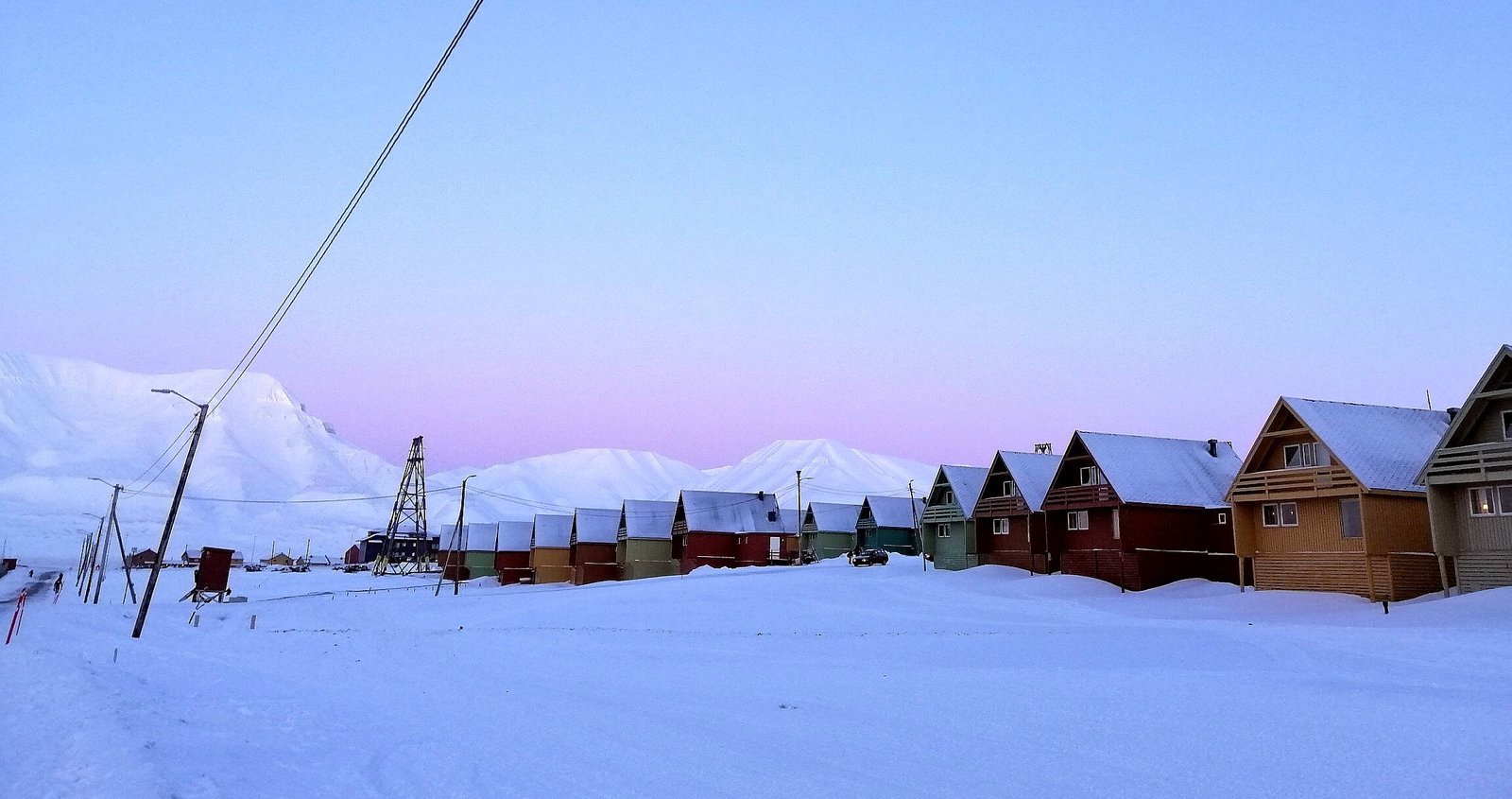
So, if you’re an adventurous soul who loves being outside, experiencing natural beauty, and really connecting with nature without any distractions, then Svalbard might just be the perfect destination for you. There are lots of options in winter or summer and I’ll talk about it more a little bit further down the article.
Svalbard may seem barren, but it has a lot of arctic wildlife like reindeer, walrus, seals, whales, arctic foxes, birds, and polar bears. It is also one of the last pristine wilderness that we have. Svalbard is 1.6x the size of Denmark or an area twice the size of Belgium and less than 2600 people, so just imagine the vastness of the outdoors here. It contains massive areas of raw Arctic wilderness.
And I guess the reason why the locals stay here, at least for me is, the Arctic silence creates an atmosphere that’s totally unique. You’ll experience a peace and quiet that’s almost unmatched anywhere else on Earth. Life feels simple here.
Interesting Facts About Svalbard
- Svalbard is home to the Global Seed Vault , sometimes referred to as the “Doomsday Vault,” which preserves a wide variety of plant seeds in an underground cavern. The Vault acts as a secure seed bank in case global disasters destroy key crops.
- Longyearbyen, the largest settlement in Svalbard, experiences the Midnight Sun from approximately April 20 to August 23 each year, when the sun doesn’t set at all. Conversely, during the Polar Night , from around October 26 to February 15, the sun doesn’t rise above the horizon.
- Despite its remote location, Svalbard has a remarkably international community. With a population of over 50 nations, it’s one of the most globally diverse places relative to its size.
- You can’t give birth here simply because the hospital is not equipped for that. So expecting mothers have to go to Tromso 2 weeks before their due date.
- Cats are banned from the island. Svalbard has a lot of areas where seabirds nest and even just a few cats could cause potential harm to the colonies. Cats can also spread diseases since they carry different parasites in their guts and intestines.
Preparing for Your Trip
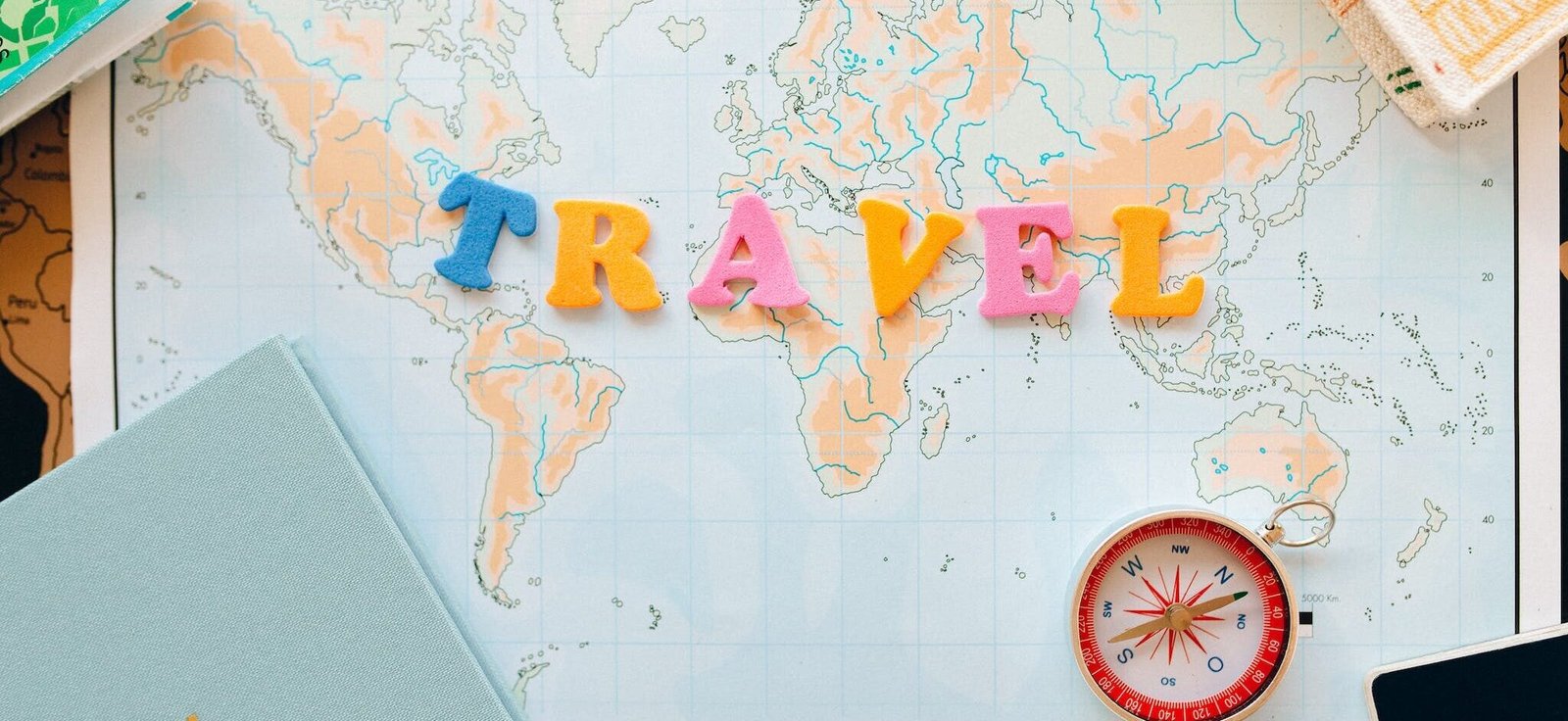
Visa and Entry Requirements
Before you pack your bags, let’s talk logistics. Svalbard is unique—there’s no visa requirement for entering , but there are some nuances. If you’re passing through mainland Norway, you’ll need to adhere to Norway’s visa regulations. It’s always a good idea to check the latest travel advisories before your trip.
How to Get to Svalbard
Reaching the edge of the world is simpler than you might think. Regular flights from Oslo and Tromsø bring you straight to Longyearbyen. But remember, the weather can be unpredictable, so plan for potential delays.
Best Time to Visit Svalbard
Timing is everything. Do you want to experience the 24-hour daylight ( midnight sun ) or the mystical northern lights? The Midnight Sun reigns from late April to late August, while the Polar Night (24-hour dark) lasts from late October to mid-February.
For wildlife and warmer temps, aim for the summer months. If the aurora borealis is on your bucket list, winter is your best bet. If you want to experience dog sledding, skiing, or go on a trip with a snowmobile, then spring season is the best time. Keep in mind, that each season offers a unique Svalbard experience, so choose what calls to you the most.
Costs and Budgeting for Your Trip
Svalbard isn’t a budget destination—expect high costs for accommodation, food, and activities. Plan your budget well in advance, considering tours, dining out, and any unique experiences like dog sledding or snowmobiling, which can add up quickly.
What to Pack: Clothing and Essentials for Svalbard Weather
Layers are your best friends in the Arctic. Pack thermal underwear, insulated outerwear, waterproof boots, and accessories like beanies and gloves. Don’t forget UV-protective sunglasses and sunscreen for the summer’s constant daylight.
Health and Wellness
Stay hydrated and well-nourished; the cold can deceptively dampen your thirst and hunger cues. Prepare for the physicality of Arctic adventures with pre-trip fitness, and always have emergency contacts at hand.
Environmental Responsibility
Svalbard’s beauty comes with fragility. Stick to designated paths, minimize waste, respect wildlife from a distance, and follow all guidelines for environmental conservation. Remember, leave no trace and take only memories.
Navigating Svalbard
Navigating Svalbard is an adventure in itself. Getting from one place to another is as much a part of the experience as the destinations themselves.
Getting Around: Transportation Within Svalbard
Longyearbyen is walkable, but for longer distances like to the airport or visiting the mines, taxis and buses are available. For exploring the wilderness and remote areas, snowmobiles reign supreme in winter, while boats are the go-to in summer. But always remember: when venturing beyond town limits, Svalbard’s safety rules kick in, so prepare accordingly and consider hiring local guides for the true Arctic exploration experience.
If you booked a guided tour, pick up and drop off is part of the package most of the time so you don’t have to worry about that.
Towns and Settlements
There are a total of 5 settlements here in Svalbard-Longyearbyen, Barentsburg, Pyramiden, Ny-Ålesund, and Hornsund in Southwestern Spitsbergen which houses a small Polish research station.
Longyearbyen

Longyearbyen is the largest settlement in Svalbard. It’s known for being the world’s northernmost town of its size, offering a surprisingly rich array of cultural and modern amenities. Despite its remote location, it has a university center, quality dining, and even its own brewery and chocolate.
Historically, Longyearbyen was established as a coal mining town by the American businessman John Longyear in 1906, which is how it got its name. Mining was the backbone of the town for a long time, but now it’s transitioning towards research, tourism, and education. The town has adapted to the Arctic life with unique quirks like removing shoes indoors to avoid dragging in coal dust, a tradition from its mining days. Despite the harsh climate and potential encounters with polar bears, our community is known for its resilience and hospitality.
Barentsburg
The second-largest settlement on Svalbard. It’s still a working mining town, though tourism is growing in importance. Unlike Longyearbyen, Barentsburg has a more Soviet feel, with its stark architecture and monuments from the Soviet era. It’s a place that feels like a step back in time, with its own cultural quirks, such as the Russian signposts and the Pomor Museum, which tells the story of Russian hunters from the past. Despite its remote location, Barentsburg has its own hotel, a few shops, and even a brewery that caters to both residents and visitors.
Pyramiden is an abandoned Soviet-era mining town on Svalbard, named after the pyramid-shaped mountain nearby. It was established by Sweden in the 1910s and sold to the Soviet Union in 1927. Pyramiden was once home to a thriving community, but it was abruptly abandoned in 1998, leaving behind buildings that are like time capsules of the Soviet era. Today, it’s a ghost town that attracts tourists for its eerie, well-preserved buildings, including the world’s northernmost statue of Lenin and a once bustling cultural center with a gym, library, and music hall. Visiting Pyramiden is like walking through recent history, seeing a slice of life preserved in the Arctic cold.

It’s renowned primarily for its research facilities; various countries have stations here to study arctic sciences, from biology to glaciology. This place has a rich history in polar exploration and was a starting point for several North Pole expeditions. Today, it’s a small international community of scientists and support staff, with usually fewer than 200 people living there at any given time. There are no permanent residents; people come here mainly for research purposes. Despite its focus on science, Ny-Ålesund retains elements of its past, including historical buildings and a post office that’s a favorite for sending postcards with a unique Arctic postmark.

The Polish research station in Hornsund, Svalbard, has a small but significant presence, with a total population of 12 people as of 2023. Established in 1957 by the Polish Academy of Sciences during the International Geophysical Year, the station was built on the flat marine terrace of Isbjørnhamna. Initially set up for summer research, it was modernized in 1978 to support year-round scientific activities .
Today, the station’s research encompasses a wide array of Arctic sciences. Full-year research includes meteorology, seismology, geomagnetism, ionospheric sounding, glaciology, atmospheric electricity, and environmental monitoring. These studies are crucial in understanding climate change, seismic activities, the structure of the ionosphere, and the dynamics of glaciers. Additionally, the station serves as a base for seasonal research in fields such as geology, geodesics, geomorphology, oceanology, and biology . Wikipedia
This outpost is a testament to the global scientific community’s commitment to studying and understanding the Arctic’s environment and its broader implications for the world.
Where to Stay in Svalbard?

Finding a cozy place to stay is an essential part of any travel experience, especially in the remote Arctic. In Svalbard, you’ll be pleasantly surprised by the range of accommodation options that provide comfort and warmth in contrast to the chilly wilderness outside.
We do have quite a few choices. Prices vary depending on the season so make sure to check out their website to get a more accurate quote. The prices I have indicated here were from this year’s summer season.
Radisson Blu Polar Hotel (2709 NOK) : Centrally located with big rooms and a fjord view. Perfect for unwinding after outdoor activities with its in-house pub and restaurant. It can get busy with tour groups.
Svalbard Hotel (2709 NOK) : Offers beautifully decorated rooms, complimentary breakfast, and a gourmet in-house restaurant, Polfareren.
Basecamp Hotel (3300 NOK) : A cozy, rustic hotel that mimics a High Arctic trapper’s hut. It includes a great breakfast and offers various excursions. Located centrally.
Mary-Ann’s Polarigg (1425 NOK/single room) : Converts old miners’ barracks into charming hotel rooms with a homey feel.
Funken Lodge (3847 NOK/night) : A short walk from downtown, this upscale hotel offers large, modern rooms and a French restaurant, blending luxury with adventure.
Coal Miner’s Cabins (1300 NOK) : Budget-friendly with a mix of shared and private bathrooms. It’s a 20-minute walk from the town center.
Gjestehuset 102 (1400 NOK) : A budget hostel close to Coal Miner’s Cabins with shared bathrooms. Situated in Longyear Valley, ideal for exploring the town from top to bottom.
Haugen Pensjonat (1600 NOK/night) : Just a 10-minute walk to the town center. Bright rooms with king-size beds and sofas, offering views of mountains or Longyearbyen and Adventfjorden.
Where to Eat and Drink

As nothing grows in this region, we don’t have a distinct local cuisine. Instead, our cuisine is a blend of different flavors and a variety of experiences, influenced by some elements from the Arctic.
Mary Ann’s Vinterhagen
Serves up local specialties, offering dishes made with reindeer, seal, and whale meat, Svalbard cod, etc. The hearty flavors of these meats and fish are a reflection of the traditional Arctic diet and are worth trying for an authentic Svalbard experience.
Is known for its relaxed atmosphere and historic touch. Here you can start with smoked minke whale before moving on to a hearty moose burger, blending traditional tastes with a touch of the familiar.
Offers a mix of traditional Norwegian food and international dishes. Here you can enjoy everything from succulent spare ribs to whale steak and fresh cod, providing a broad taste of Norway’s culinary offerings.
Restaurant Polfareren
Svalbard Hotel is where you can enjoy a gourmet meal without breaking the bank. The menu features Svalbard reindeer, whale, cod, and salmon, catering to those who seek a fine dining experience with a touch of the Arctic.
Restaurant Nansen
Provides a high-end dining experience with a menu inspired by the Nordic regions, including local Svalbard cod and reindeer .
Gruvelageret
Offers fine dining in a historic setting that reflects 100 years of coal mining history in Svalbard. The focus here is on genuine and honest food with elements from the Arctic, including reindeer dishes that start the meal off on an authentic note .
Huset Restaurant
Considered one of Norway’s premier dining experiences, focusing on Nordic techniques and local produce. It’s also known for one of Northern Europe’s most extensive wine cellars, boasting over 15,000 bottles. They serve ingredients primarily from the Arctic region, including bearded seal and ptarmigan, providing a true taste of Svalbard .
For those looking for more familiar options, Barentz Pub and Svalbar offer comfort foods like burgers and pizzas, perfect for those craving a taste of home amidst the Arctic surroundings. We also have cafes like Fruene and Cafe Huskies if you just want a light meal or a cozy spot for coffee.
In all these dining experiences, the emphasis on locally sourced ingredients is clear, and the Arctic influence is ever-present, ensuring that every meal contributes to a truly Svalbard experience.
Shopping and Supermarkets

Shopping in Longyearbyen offers a unique experience where you can find everything from practical outdoor gear to distinctive local handicrafts. Given its remote location, the variety of goods available is quite impressive.
Supermarket : We only have one supermarket up here-Svalbardbutikken, which resembles a typical European grocery store but with a broader selection of frozen goods to cater to the longer shelf life needed for remote living. Here, you can find a wide range of food items, from fresh fruits and vegetables to dairy, meats, and dry goods. The prices can be higher than on the mainland due to transportation costs. However, since we are in the Arctic, it’s not always a given that certain products will always be available.
Souvenirs and Specialties : For souvenirs, there are several stores where you can buy unique Svalbard-themed items such as postcards, stamps, books, and local art. These shops also sell outdoor clothing and equipment, catering to both the rugged needs of adventurers and the desire for comfort against the Arctic chill.
Local Handicrafts : The local crafts include items made from Svalbard reindeer and seals. It’s important to note that while these items are locally sourced and crafted, there may be restrictions on bringing them into certain countries, so always check customs regulations.
Alcohol and Tobacco : These items are sold at Nordpolet, located within Svalbardbutikken. Due to Svalbard’s duty-free status, prices for alcohol and tobacco are considerably lower than in mainland Norway, but there are strict regulations on how much you can purchase without a permit.
Activities in Svalbard
I’m just making a list of the things you can do in Svalbard. I’ll be writing a different piece with more in-depth information about it.

Spring Season (March- Mid May; Sunny Winter)
This is my favorite time of year. This time of day has the most beautiful sky. After living in the dark for three months, seeing the light again is like being reborn. And after that long darkness, locals are now eager to go outside and explore.
Dog Sledding : Whether it’s the dark season or the midnight sun, dog sledding is an authentic way to experience the Arctic. Mushing across the tundra offers a quiet and respectful way to witness the untouched landscapes.
Snowmobile Tours : Speed across the frozen landscapes and reach remote areas not accessible by foot. It’s a thrilling way to explore the vast wilderness and hunt for the Northern Lights during the polar night.
Glacier Hiking : Strap on some crampons and explore the blue ice of Svalbard’s glaciers. It’s a breathtaking experience that showcases the island’s dramatic frozen scenery.
Ice Cave Visits : Glaciers in Svalbard are a network of ice caves carved by meltwater, and the good news is that some are open for exploration. With the right gear like a headlamp, crampons, and a helmet, you can immerse yourself in the serenity of these ice formations, surrounded by stunning shades of blue, delicate icicles, and intricate snow crystals.
To reach the ice cave, you’ve got choices. You can go dog sledding and just let a husky team lead you there. Snowmobiles and snowcats offer a faster ride to the cave’s entrance or if you prefer not to join a group, you can also go skiing or snowshoeing. Pick your adventure based on the experience you’re after but always remember to have a local guide with you!
Nordic Skiing : If you visit during the colder months, cross-country skiing is a fantastic way to travel the snowy landscape and enjoy the pristine Arctic environment.
Summer Season (Mid May – September; Midnight Sun)
The 24/7 daylight. Others find that this is an excellent time for travel because they feel like they have lots of free time and vitality. However, for some people, falling asleep presents a challenge, so make sure to bring a sleeping mask with you when you visit up here during this season.
Hiking : Longyearbyen offers a range of guided hikes for all levels, each promising breathtaking views and expert guidance. You can do a guided hike with photography, or fossil hunting to find ancient plant fossils. Guides will share insights into the local history and geology as you enjoy a break.
Amazing hikes include the panoramic Plateau Mountain, Blomsterdalshøgda with views of the Global Seed Vault, or the glacier-crossing trek to Trollsteinen.
Boat Trips : During the summer, boat trips offer a unique perspective of the fjords, glaciers, and wildlife. Keep an eye out for whales, seals, and seabirds as you navigate the Arctic waters. There are choices of half-day trips, full-day trips, and multi-day excursions with expedition cruises around Svalbard.
Kayaking : Paddle in the silence of the Arctic, with the water as your path through fjords and beside glaciers. It’s a peaceful activity that connects you with the profound tranquility of the North.
Taxi Tours: The best way to get an overview of Longyearbyen. The driver can tell you about the history of Longyearbyen and some major local attractions.
Biking Tours: You can join biking tours in Svalbard that offer a glimpse of the Arctic’s natural beauty, complete with fjords, mountains, and potential wildlife sightings. You’ll pass by remnants of Svalbard’s mining past. With a guided tour you can benefit from expert knowledge and safety guidance, allowing you to make the most of the experience.
ATV Safari: You will drive a Can-Am Outlander ATV from Longyearbyen town out to the Advent Valley. If you’re lucky you might see some reindeer and arctic foxes among the rich bird life.
Fishing Trips: Svalbard’s fishing trips let you enjoy the dual pleasures of observing wildlife while fishing. You can catch cod and learn about the area’s fishing practices. Not always but you may also get a chance to see walruses and whales, during your fishing adventure.
Winter Season (October – February; Polar Night)
And of course, the polar night or dark season as most of us call it. For 3 months the sun doesn’t go above the horizon. Total pitch black outside. It is my least favorite season so I normally take my vacation during this time of the year. But it comes with an advantage. Because that means you can see Northern Lights no matter what time of the day it is.
Northern Lights Expeditions : Northern Lights tours in Svalbard during winter are a prime attraction, offering a chance to witness the aurora borealis in one of the few places on Earth where it’s visible. Options range from snowmobile and dog sled excursions to stationary observatories, for both active and relaxed observation. The tours are guided by experts who can not only help locate the best views but also explain the science and folklore behind the northern lights.
Snowmobile trips (shorter ones) : Snowmobile trips in Svalbard during winter are a thrilling way to explore the Arctic landscape, including destinations like the Iron Beds, Brattadalen, and Colesdalen. The iron beds give a glimpse into Svalbard’s mining history, Brattadalen offers wide valleys with a chance of spotting wildlife, and Colesdalen features stunning ice formations. All tours are led by experienced guides who prioritize safety and provide all necessary equipment.
Dog Sledding : This guided excursion provides all necessary equipment and typically includes warm clothing to ensure comfort against the Arctic chill. Dogsledding during this time not only offers an authentic Arctic experience but also a chance to connect with the quiet and majestic nature of Svalbard’s wilderness.
All Year Round
Visit the Global Seed Vault : While you can’t go inside the vault itself , you can see the entrance to this crucial global initiative, which preserves a wide variety of plant seeds from around the world.
Cultural Experiences : Visit the Svalbard Museum to learn about the history and nature of the archipelago, or catch a performance at the world’s northernmost cultural center. Or drop by the North Pole Expedition Museum which houses an extensive collection of artifacts, photographs, and stories documenting the heroic efforts of North Pole expeditions throughout history. It’s an inspiring visit that offers a deeper understanding of polar exploration and the immense challenges faced by adventurers in the Arctic.
Photography Tours : With its unique landscapes and lighting, Svalbard is a photographer’s dream. Guided tours can help you capture the perfect shot, whether it’s wildlife, auroras, or midnight sun vistas.
Local Brewery Tour : The tour explains the history of alcohol law in Svalbard, and the process of making beer in such an extreme Arctic environment, and includes a tasting session of the various beers produced on-site. This tour requires booking in advance and provides an opportunity to purchase brewery merchandise and bottled beers to take home.
Practical Information

Flights to Longyearbyen
Norwegian Air and SAS are the two airlines that fly up here a couple of times a week. Sometimes the flight frequency increases up to twice per day during high season, from March to August, so plan accordingly.
WiFi and Cellular Data
Most hotels, restaurants, and public spaces in Longyearbyen offer free WiFi to customers. Svalbard is special in so many ways. Some rules from mainland Norway apply and some don’t. But luckily the EU mobile phone roaming regulation also applies up here. So travelers from the EU don’t need to worry about roaming charges. But for others, roaming charges can be high so always check with your service provider.
Currency and Payments
The Norwegian Krone (NOK) is the currency used in Svalbard. Card payment is the primary method of payment since we do not have a bank here anymore. Not all establishments accept cash payment .
Shopping Hours
Shops in Longyearbyen have limited hours, especially outside of the tourist season, so plan accordingly. The supermarket has broader hours, but don’t expect the 24/7 services found in larger cities.
Safety Precautions in Svalbard
Safety here goes beyond packing a first-aid kit. Due to polar bear risks outside settlements, always have a means of protection and an experienced guide. Avalanches and glaciers also pose dangers, so heed local advice and stick to marked trails.
Average Daily Costs in Svalbard :
Living and traveling in Svalbard can be expensive. On average, a budget traveler might spend around 1500-2000 NOK per day, staying in hostels and self-catering. Mid-range travelers can expect to spend about 2000-3000 NOK per day for a hotel room, meals at restaurants, and some activities. For a more comfortable experience with tours and dining, expect to spend upwards of 3000 NOK per day.
This, of course, is just an estimation. The total cost will depend on how and when you want to spend your time up here. I have included a list of tour companies below so you can plan ahead of time.
- Henningsen Transport and Guiding – for boat tours along the fjord during the spring and summer seasons.
- Hurtigruten Sv a lbard – all-year-round tour provider
- Svalbard Adventures – all-year-round tour provider
- Basecamp Explorer – offers day trips, overnight trips, and expeditions
- Svalbard Wildlife and Expeditions – most of the tours they offer are during summer and on small groups
- Better Moments – offers snowmobile trips in the winter and boat, kayak, and hiking trips in the summer
- Backyard Svalbard – specializes in ski touring with certified guides
- Svalbard Husky – specializes in short and long expedition trips through dog sledding
- Green Dog Svalbard – short and multi-day dog sled expedition
How much time do you need in Svalbard?

Depends on your interests, budget, and the activities you plan to do. In my opinion, If you plan on doing 3 activities, you need 5 days because most of the activities start early morning . You can squeeze in the sightseeing tour or short hikes on the day you arrive or before you leave.
A short stay of about 3-4 days can be sufficient for exploring Longyearbyen, participating in a few activities like dog sledding or a snowmobile tour, and perhaps a quick day trip around the area.
If you’re interested in more extensive experiences, such as boat trips to remote areas, overnight snowmobile trips, longer dogsled excursions, or hikes during the summer, a week to ten days could be more appropriate.
For those looking to immerse themselves in the Arctic environment, engage in specific wildlife watching, or undertake scientific or photographic work, you might want to plan for even longer, up to a couple of weeks or more. Always keep in mind the seasonal variations, as they can greatly affect the types of activities available and the experience during your visit.
Sample 5 days Itinerary in Svalbard
Day 1: arrival and longyearbyen exploration.
- Arrive in Longyearbyen and check into your accommodation.
- Spend the afternoon exploring the town, visiting the Svalbard Museum to learn about the region’s history and natural environment.
- Enjoy dinner at a local restaurant and get your first taste of Arctic cuisine.
Day 2: Dog Sledding Adventure
- Embark on a half-day dog sledding trip to experience the Arctic wilderness. Learn to mush your own team of huskies.
- In the afternoon, visit the Svalbard Art Gallery and the North Pole Expedition Museum.
- Relax in the evening with a craft beer at Svalbard Brewery.
Day 3: Snowmobile Tour to the Wilderness
- Gear up for a snowmobile tour, which is a quintessential Svalbard activity. After a safety briefing, you’ll ride through the stunning Arctic landscape, exploring frozen fjords and valleys.
- Stop for a warm lunch at a remote cabin and enjoy the silence of the wilderness.
- Return to Longyearbyen in the afternoon. Rest or explore more of the town at your own pace.
- For dinner, relax at a local eatery with comfort food to wind down after an exhilarating day.
Day 4: Fjord Cruise, Wildlife Watching, and Ice Caving
- Begin your day with a boat tour to explore the majestic fjords. Keep your eyes peeled for wildlife such as seals and seabirds, with the melting ice providing opportunities for unique sightings.
- After returning from the cruise, refuel with a quick lunch in town.
- In the afternoon, join a guided tour of an ice cave. Discover the intricate beauty of ice formations and learn about the glaciers that shape Svalbard’s landscape.
- Spend the evening reflecting on your day’s adventures over a leisurely dinner featuring local ingredients.
Day 5: Leisure Day and Departure
- Spend your last morning in Svalbard at leisure. Consider a casual walk around town or a visit to the local greenhouse.
- Check out of your accommodation and catch your flight home, or continue on to your next destination.
Remember to book all activities in advance and stay flexible, as weather conditions can change plans in Svalbard. Always follow your guide’s advice for safety considerations, especially regarding wildlife and terrain.
I will be writing more about Svalbard and will update this page from time to time. You could also go to visitsval bard.com for any information you did not find here. That’s all for now and hope to see you around!
Cherie Gonzales
Cherie is an outdoor enthusiast who moved from a tropical area all the way to the Arctic to experience raw nature. She works for an expedition tour company in Longyearbyen, Svalbard. She understands the challenge of finding the ideal outdoor gears that fits your budget and needs. With so many choices available, her goal is to simplify the selection process.
Similar Posts

Living in Longyearbyen: A Simple Guide to Life Above the Arctic Circle
Looking to move to a unique and remote location? Longyearbyen, a small town situated above the Arctic Circle,…

Exploring the Arctic Beauty of Svalbard
Discover the breathtaking beauty of Svalbard, an Arctic paradise. Explore its stunning landscapes, majestic glaciers, and unique wildlife.
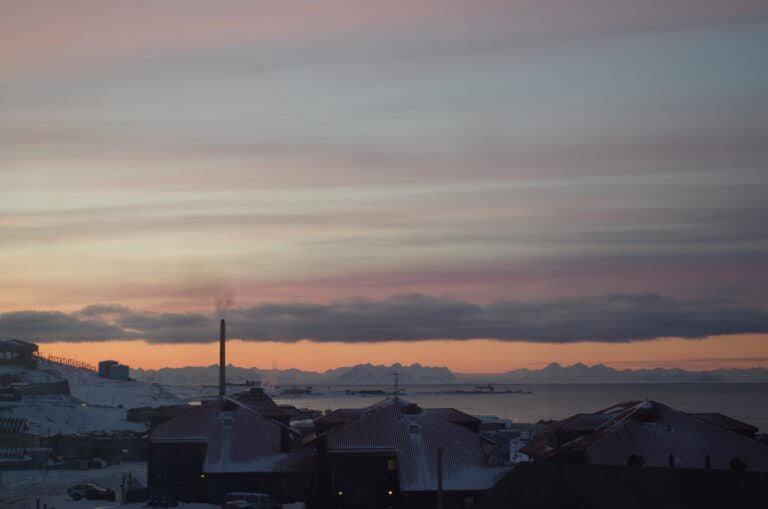

Insider’s Guide: Top 10 Tips for Traveling to Longyearbyen
Greetings, Arctic adventurers! If you’re gearing up for a journey to Longyearbyen, the heart of Svalbard, you’re in…

Longyearbyen: Arctic Adventures and Sustainability Goals
Explore Longyearbyen’s Arctic adventures, sustainability goals, and unique challenges as this northernmost settlement combats climate change.

Arctic Adventure Essentials: What To Prepare
Explore Arctic Adventure Essentials for outdoor enthusiasts, featuring layering tips, footwear advice, and gear to tackle extreme weather.
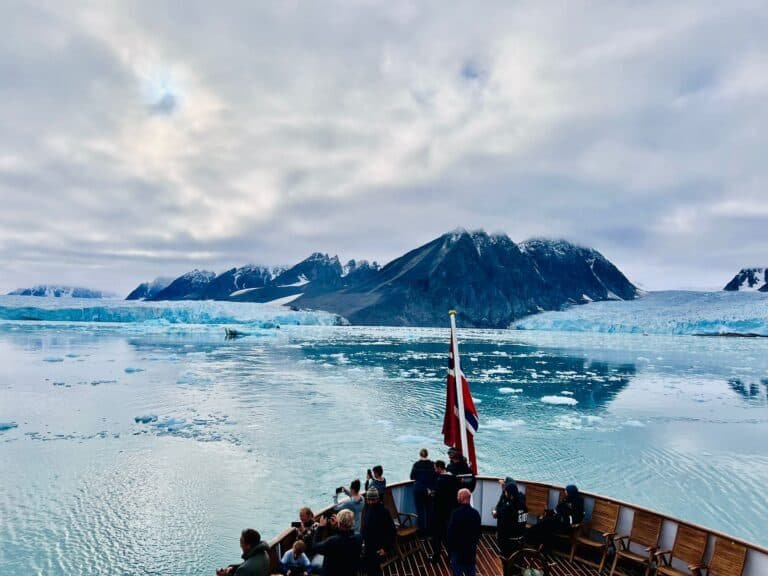
6 Best Arctic Cruises: Adventure and Wildlife in 2023
If you’re someone who enjoys outdoor activities and the excitement of exploring new places, then Arctic cruises may…
Besichtigung - Svalbard Maxi Taxi

Website besuchen
Besuchen Sie uns auf Facebook
Senden Sie uns eine E-Mail
+47 79021305
- Für Rollstuhlfahrer geeignet
- Kurze Wanderungen (1-4 Stunden)
Quelle : Svalbard Reiseliv AS
Vor kurzem angesehene Seiten

How To Visit Svalbard Global Seed Vault
Svalbard Global Seed Vault is a huge gene bank that stores seeds from all over the world. The Seed Vault is located on the arctic island Svalbard, north of mainland Norway.
You’ve probably seen pictures of the entrance to Svalbard Global Seed Vault in the media several times already, so why not visit Svalbard Global Seed Vault when you’re coming to Svalbard?
Svalbard Global Seed Vault is unfortunately not open to regular tourists, but it’s possible (and quite easy) to get to the main entrance to look at it. The vault is just 2.5 km (1.5 miles) away from Svalbard Airport, and easy to reach by snow scooter or car.
There are also tour groups that take you all the way up to the entrance, so you won’t have any problems to visit Svalbard Global Seed Vault (as long as you won’t expect to get inside).

How to get to Svalbard Global Seed Vault by yourself
Svalbard Global Seed Vault is so close to Longyearbyen that you can easily get there yourself. If you want to walk, expect to spend around 40 to 50 minutes getting there from the main city center.
Another option is to walk from the airport, which is just a short 20 minute hike between Longyearbyen Airport and the Svalbard Global Seed Vault.
The vault is a bit up in the mountains, so be prepared for some hiking, but it’s along a road, so it’s not difficult.
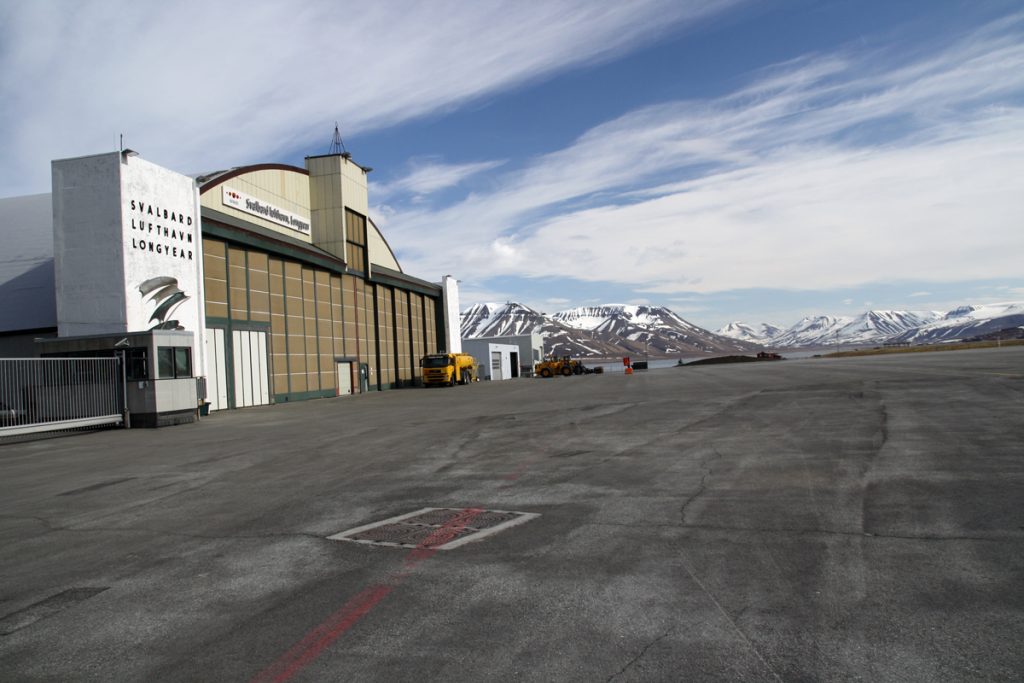
But make sure to be armed, since there can be polar bears roaming in these areas. So either be armed to bring an armed person to accompany you on the hike. The seed vault is just outside of the polar bear safe zone, so you need to take care of yourself if you are hiking up to it.
Also read : Polar bears in Norway explained .

It’s also possible to get to Svalbard Global Seed Vault by car, snow mobile or taxi if you can get your hands on either of these. There’s no regular car rental or even standard taxi service on Svalbard, but it’s entirely possible to make deals with the locals to rent these things.
Joining an organized tour group to see Svalbard Global Seed Vault
It’s super easy to visit Svalbard Global Seed Vault with a guided tour group, and you have several options.
One of the easiest and most popular ways to visit Svalbard Global Seed Vault is to join the tour called “ Longyearbyen in a nutshell “. This 2 hour trip takes you around the city, and includes a stop outside the entrance to Svalbard Global Seed Vault.
Another option is to join the “ Seed to Summit ” trek, which is a 4 hour hiking trip just outside of Longyearbyen. This hike starts just by the entrance to Svalbard Global Seed Vault, so you can stop for a short rest there and get some photos. In addition, you’re in for an incredible mountain hike!
There are also other guided trips that will stop by the seed vault, and it’s actually a pretty common place to stop by for guided tours in Longyearbyen.
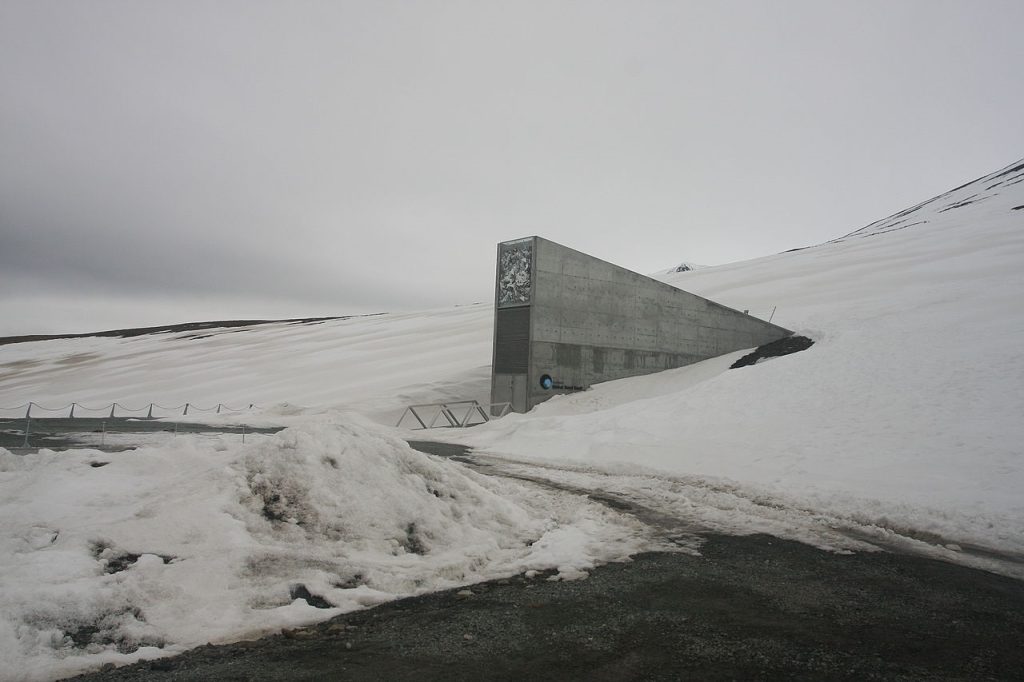
What exactly is Svalbard Global Seed Vault?
Svalbard Global Seed Vault is a storage facility for seeds from around the world, with the purpose of having these as a backup in case of a global catastrophe that would otherwise wipe out agricultural seeds.
They are designated to only be used when there are no other seeds available, so they are kind of a last resort if everything else has failed.
The idea behind having this on Svalbard is that the seeds are still cooled down by the permafrost even if the power stops working, so you will always have a backup stored at this remote island.
There are already over 1 million seeds at the seed vault, deposited from all over the world. Syria was the first nation to retrieve seeds from the vault , following the many years of civil unrest in the country.
The seed vault facility is owned by the Norwegian government, but is open to any country or government that wish to deposit agricultural seeds.
Why you cannot go inside the Svalbard Global Seed Vault
Svalbard Global Seed Vault is an important backup system for agriculture, and not a tourist attraction . Many are actually very concerned over the fact that Svalbard Global Seed Vault has gotten status as a tourist destination on Svalbard, because it would be best for the vault to be as undisturbed as possible.
As a matter of fact, there is a safety zone around the perimeter where you are not legally allowed to enter . There will be visible signs telling you to stop and not get closer, but many people seem to ignore these.
Svalbard Global Seed Vault was never intended to be a tourist attraction, so it just makes no sense to actually let people inside. The seeds are stored in freezing temperatures, and the facility itself is nothing more than a huge underground storage facility with big boxes filled with seeds.
As you can see from the photo below, the vault itself isn’t really something special to look at, and most of the facility is just like this; huge rows of stacked boxes.
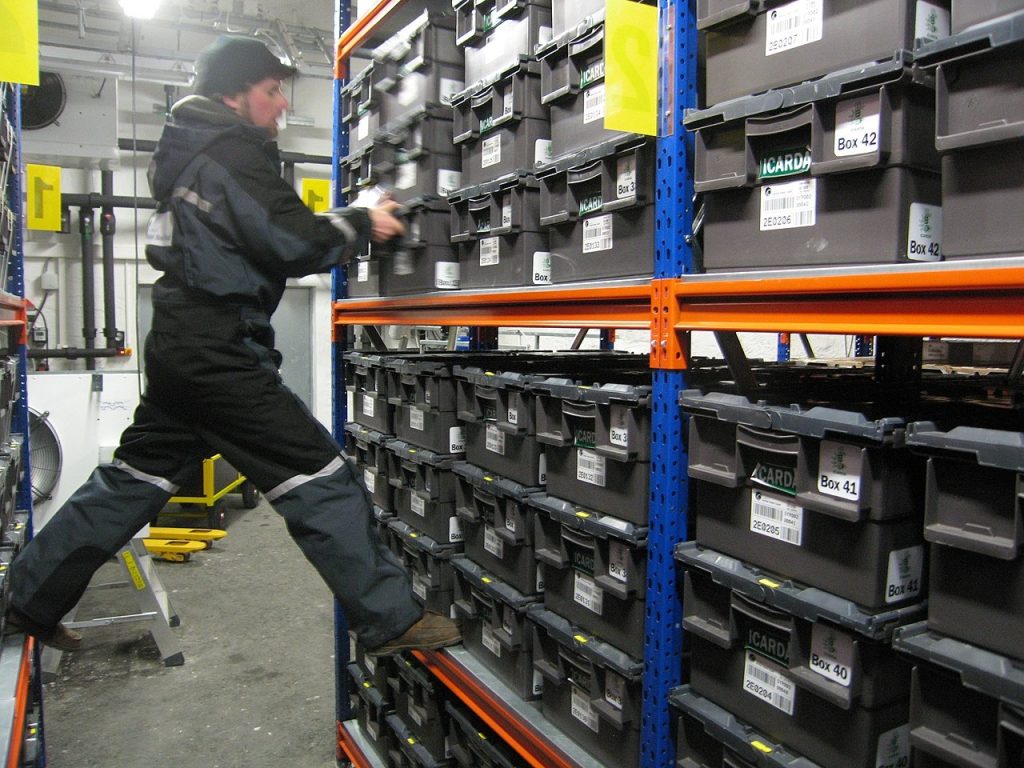
There are no day to day workers on the facility itself, and they are only there occasionally to deposit more seeds or monitor different parts of the facility.
Frequently asked questions about a visit to Svalbard Global Seed Vault
When is the best time to visit svalbard global seed vault.
You can visit Svalbard Global Seed Vault at any time really. Some find it most beautiful in the winter when it’s dark, while others prefer to visit it during summer when it’s daylight and sunny. Both options are fine – it’s usually not that many people there, and you get a good view as long as it’s not foggy or heavy snow or rainfall.
I would not plan my holiday to Svalbard around the best time to visit the Svalbard Global Seed Vault, because it’s going to be a nice experience to see the entrance no matter which time of the year you are coming.
Can you really not enter Svalbard Global Seed Vault?
Yep, you really cannot enter Svalbard Global Seed Vault . No matter what you do.
Unless you are an official representative of an organization that is going to enter the vault or something like that. The media used to be let in a few years ago, but this policy has changed due to new risk assessments that want to reduce the number of visits to the facility.
What is the temperature of Svalbard Global Seed Vault?
The temperature of Svalbard Global Seed Vault is a chilling -18°C ! This is the optimal temperature for long-term storage of seeds, so it’s indeed cold in the vault.
Who owns Svalbard Global Seed Vault?
Svalbard Global Seed Vault is owned and funded by the Norwegian government.
Why is Svalbard Global Seed Vault often called the “Doomsday Vault”?
Svalbard Global Seed Vault is often called the Doomsday Vault since it’s designated purpose is to be a backup system for agriculture in doomsday events. The idea is that you can go there to retrieve seeds to restart agriculture in cases of mass destruction on a planetary scale.
You are not allowed to retrieve seeds from Svalbard Global Seed Vault unless there are no other options, so this is really a last resort.
Leave a Comment Cancel reply
Save my name, email, and website in this browser for the next time I comment.
Skip To Main Content

- Food and drinks experiences
- Dog Sledding
- Sightseeing and lectures
- Brewery Visits
- Ice Cave visits
- Northern Lights adventures
- Photo safari
- Expeditions
- Fishing trips
- Svalbard Church
- Museums and Galleries
- Gullgruva Arctic Design
- Spitsbergen Sport AS
- Sportssenteret
- Svalbardbutikken
- Longyear 78
- Ingeniør G. Paulsen (IGP)
- Svalbard Snøscooterutleie AS
- Arctic Autorent
- Svalbard Camera Rentals
- Svalbard Tourist Information Office: Bike rental
- Spitzbergen Reisen Rubber boot rental
- Activity Planner
- Activity Providers
- Polarjazz Festival 3. - 6. February
- Arctic Chamber Music Festival 23. - 26. February
- Sun Festival Week 8. - 16. March
- Svalbard Ski Marathon 13. April
Spitsbergen Marathon 1. June
- Longyearbyen Pride 7. september
Isfjord Radio Music Festival 6. - 8. September
Longyearbyen literature festival 1. - 6. september.
- Taste Svalbard 2. - 6. October
- Dark Season Blues Festival 26. - 29. October
- Christmas in Longyearbyen
- New Year's in Longyearbyen
- More events
- Meetings and events (MICE) in Svalbard
- Radisson Blu Polar Hotel Spitsbergen
- Funken Lodge
- Svalbard Hotel - Polfareren
- Svalbard Hotel - The Vault
Basecamp Hotel
- Mary Ann's Polarrigg
- Isfjord Radio Adventure Hotel
- Svalbard Hotell - Lodge
- Coal Miners' Cabins
- Gjestehuset 102
Haugen pensjonat
- Longyearbyen Camping
- Nordenskiöld Lodge
- Tommy's Lodge
- Krekling Lodge
- Huset Restaurant
- Gruvelageret
- Funktionærmessen
- Restaurant Nansen
- Kroa - Steakers Restaurant
- Vinterhagen Restaurant
- Isfjord Radio Restaurant
- Huset Bistro
- Café Huskies
- Karlsberger Pub
- Barentz Gastropub
- Svalbar Pub
- Det gamle Nordpolet
- Coal Miner's Bar & Grill
- Polar Summer
- Northern Lights Winter
- Sunny Winter
- Longyearbyen
- Barentsburg
- Isfjord Radio
- Polar Bear, The King of the Arctic
- Svalbard Guidelines
- Travel Concepts
- About Svalbard
- Safety in Svalbard
Sustainable Destination
- Svalbard Cruise Forum
- Visit Svalbard Insights
- Activity providers
- How to dress in Svalbard
- Airport Shuttle in Longyearbyen
How to travel to Svalbard
Get around in longyearbyen.
- How to get to Barentsburg and Pyramiden
- Opening Hours
- Tourist Information Centre
- The use of drones
- The Northern Lights forecast for Svalbard
- For tour operators
- Articles for inspiration
Longyearbyen Community Guidelines

the northern most town in the world
You are here: Information > Travel Information > Get around in Longyearbyen
Longyearbyen is a small town, and walking around downtown Longyearbyen is a wonderful experience. There are also two taxi companies ready to take you around town, into the valley, between the town centre and Nybyen, and to the airport. Longyearbyen Taxi and Svalbard Bus and Taxi are at your service 24/7. Svalbard Buss and Taxi can also offer bus services.
There is an airport shuttle bus that stops at all the hotels and guesthouses in town. During the Polar Summer, you can borrow bicycles at the Tourist Information Centre, while Arctic Autorent is the town's car rental (located at the airport).
Follow Us...
- Destinations ,
- Svalbard Guidelines ,
- Travel Concepts ,
- About Svalbard ,
- Svalbard Cruise Forum ,
- Sustainable Destination ,
- Polar Bear, The King of the Arctic ,
- Visit Svalbard Insights ,
- Travel Information ,
- Activity providers ,
- For tour operators ,
- Articles for inspiration ,
- Polarjazz Festival 3. - 6. February ,
- Sun Festival Week 8. - 16. March ,
- Svalbard Ski Marathon 13. April ,
- Spitsbergen Marathon 1. June ,
- Longyearbyen Literature Festival 1. - 6. September ,
- Taste Svalbard 2. - 6. October ,
- Dark Season Blues Festival 26. - 29. October ,
- Christmas in Longyearbyen ,
- Arctic Chamber Music Festival 23. - 26. February ,
- More events ,
- Meetings and events (MICE) in Svalbard ,
- Apartments ,
- Guesthouses ,
- Wilderness cabins ,
- Activities ,
- Attractions ,
- Restaurants ,
- Pubs and bars ,
- About Visit Svalbard
- Member of Visit Svalbard

- Accessibility Statement
- Data Protection Policy
- Terms and Conditions

© 2024 Svalbard. All Rights Reserved
Don't Miss

What’s actually on in Svalbard?

Mary Ann's Polarrigg

Svalbard Hotell | Lodge

Café Huskies

Barentsburg and Pyramiden

- Where I’ve been
- Collaborations
- Privacy Policy
- Destinations
- Backpacking
- City breaks
- Hiking and Nature
- Off the beaten track
- Cologne & NRW

Things to do in Perm: 13 reasons I loved Perm
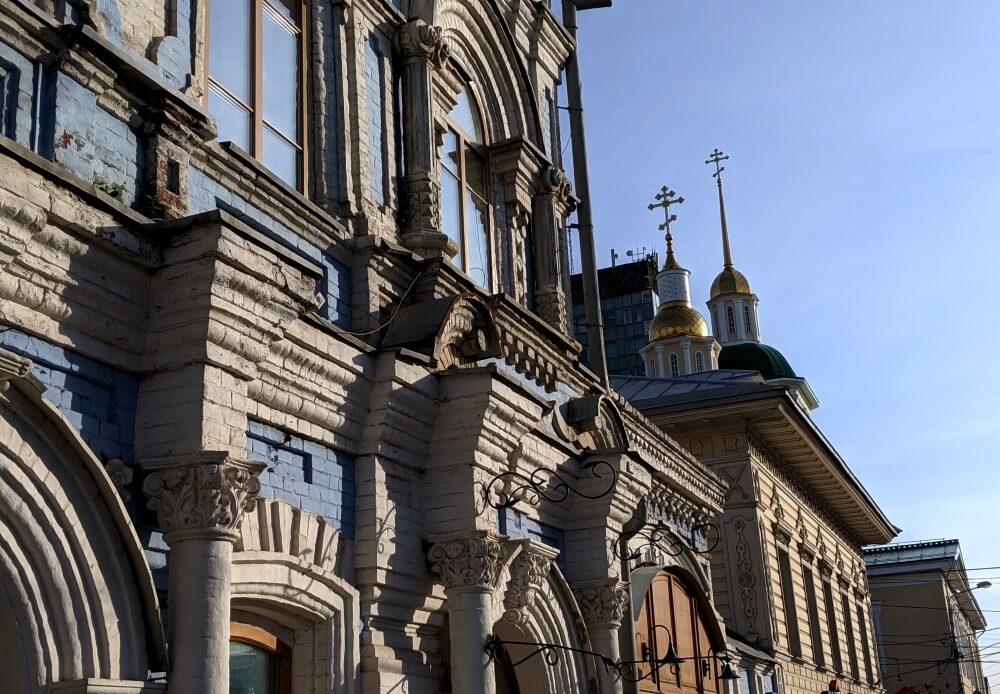
I really, really liked Perm. If you’re looking for reasons to visit Perm – or maybe even for things to do in Perm, then look no further. I visited on my Trans-Siberian journey and was so happy I did. Let me try and convince you why!
I’m going to say it again: I really, really liked Perm . The city was somewhere I’d always been curious about – mostly because I wanted to visit Perm-36 , the only former Soviet detention camp that has been preserved and is open to the public. But the more I read about the city, the more I was convinced I would like it ( despite its less-than-stellar reputation throughout the rest of Russia ), but even I have to say I’m surprised by how much I liked the city. In fact, Perm was easily my favourite city I visited on the Trans-Siberian.
Perm was easily my favourite city on the Trans-Siberian.
Here’s a few reasons why Perm left such a positive impression on me.
Check out my full Trans-Siberian itinerary here .
13 reasons I loved Perm
The last city in europe.
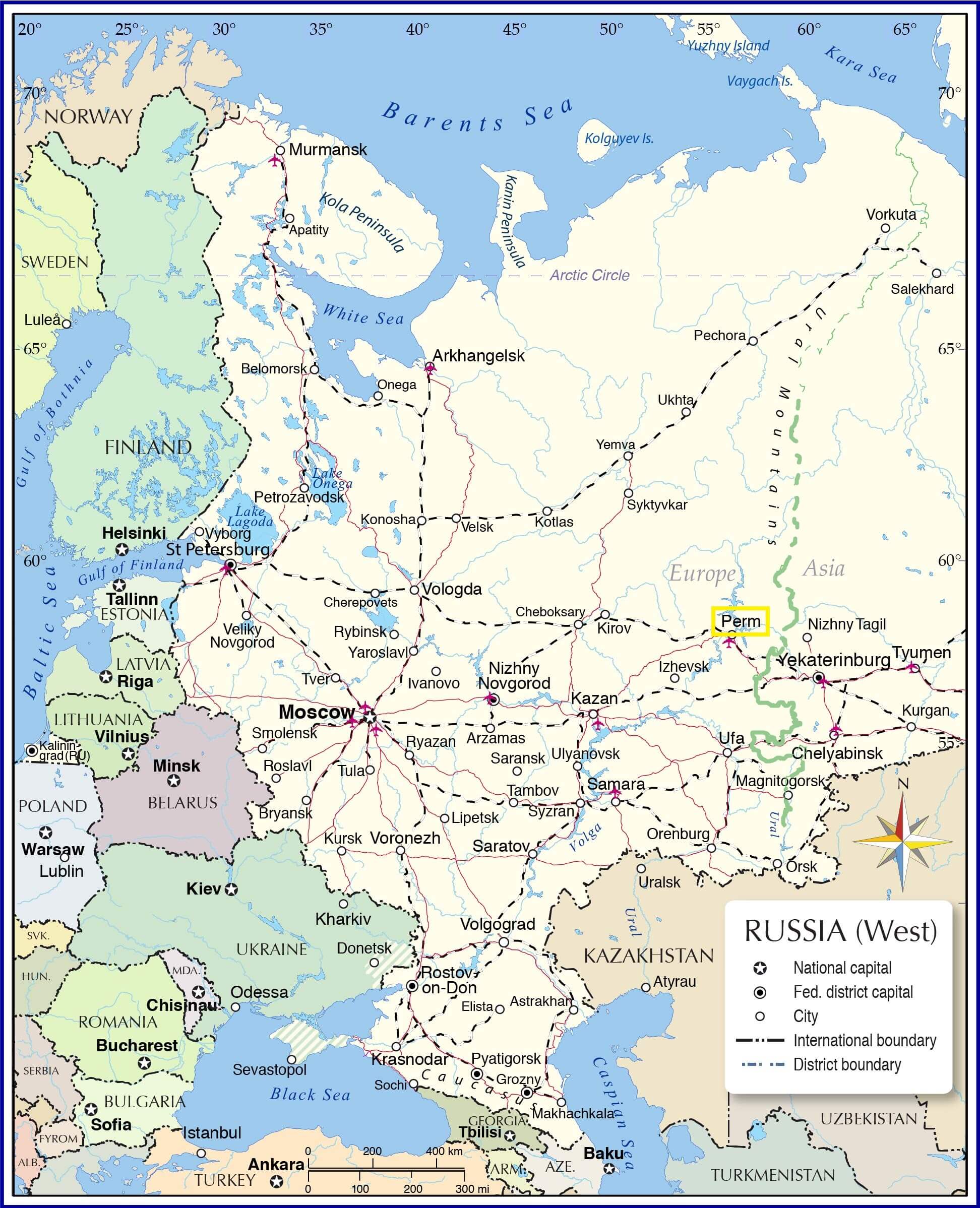
Perm is the last city in Europe, travelling east
Perm has the right to officially call itself the last city in Europe , thanks to its location just to the West of the Ural mountains. Traditionally, Perm was the last big stop that traders would make before heading into Siberia via the Kama River and traversing Siberia’s extensive river network.
But for me, travelling from East to West, Perm was the first city in Europe I reached and it 100% felt like it. The architecture in the core city centre has a strong Tsarist, imperialist feel. Streets of beautiful, old, pastel-coloured brick buildings from the turn of the century felt a world away from Siberia’s mixture of Soviet blocks and traditional wooden architecture.
The best food on my trip

Hands down, the best food I ate on my entire three-week trip was in Perm . If you’re looking for the best places to eat in Perm, head straight for Ris-Lapsha ( Rice and noodles ), a really cool Asian restaurant that does fantastic dishes. Quite similar to Wagamama’s in the UK (if you know it) in terms of offering, but a hundred times nicer. It was recommended to me several times by local Permians as one of the best restaurants in Perm , so you know it has to be good. It’s a small chain, but the most central restaurant is on Permskaya Ulitsa (number 11) , but not marked on Google Maps.
Another great restaurant worth checking out is Toropomodoro , found in a small courtyard just off Ul. Lenina. The interior is a very intimate ( read: small ) exposed-brick set up, with just a handful of tables. The menu is surprisingly long and the pizzas are amazing . Also recommended to me by a local, this is another great choice if you’re looking for the best food in Perm.
The Perm Stefanov Holy Trinity Monastery
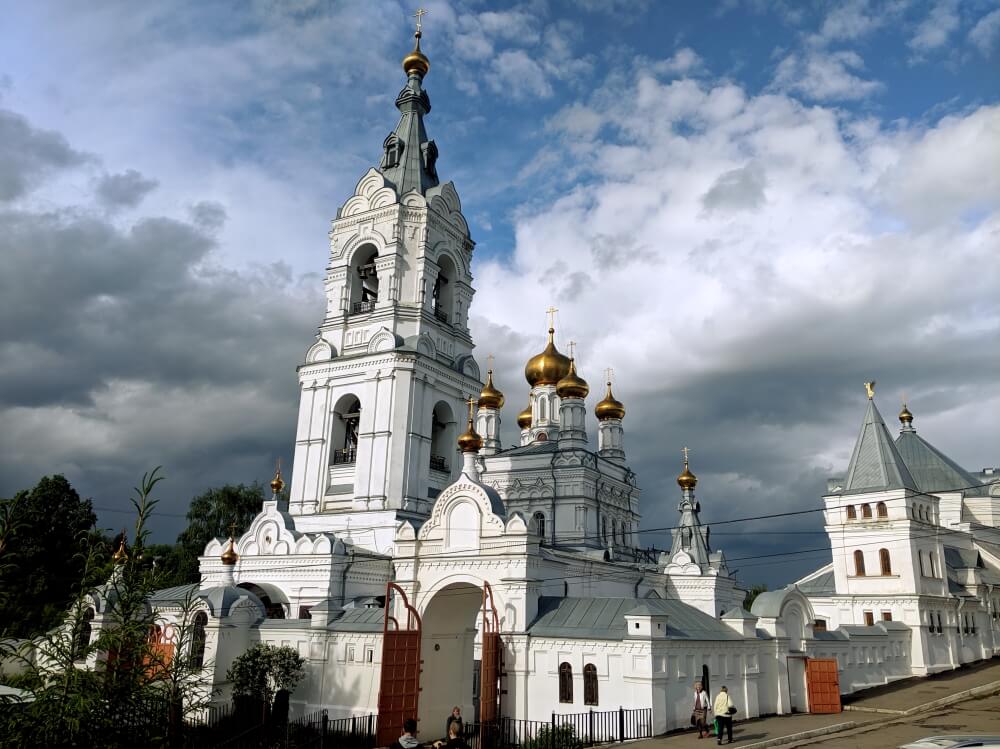
One of the most beautiful monasteries I came across during my trip was the Perm Stefanov Holy Trinity Monastery, found in the Motovilikha suburb. Our visit here was fleeting, but the monastery is just as beautiful inside as out. Located a bit further out from the centre of Perm, the monastery is nevertheless well-worth a short taxi ride to explore.
Dr. Zhivago
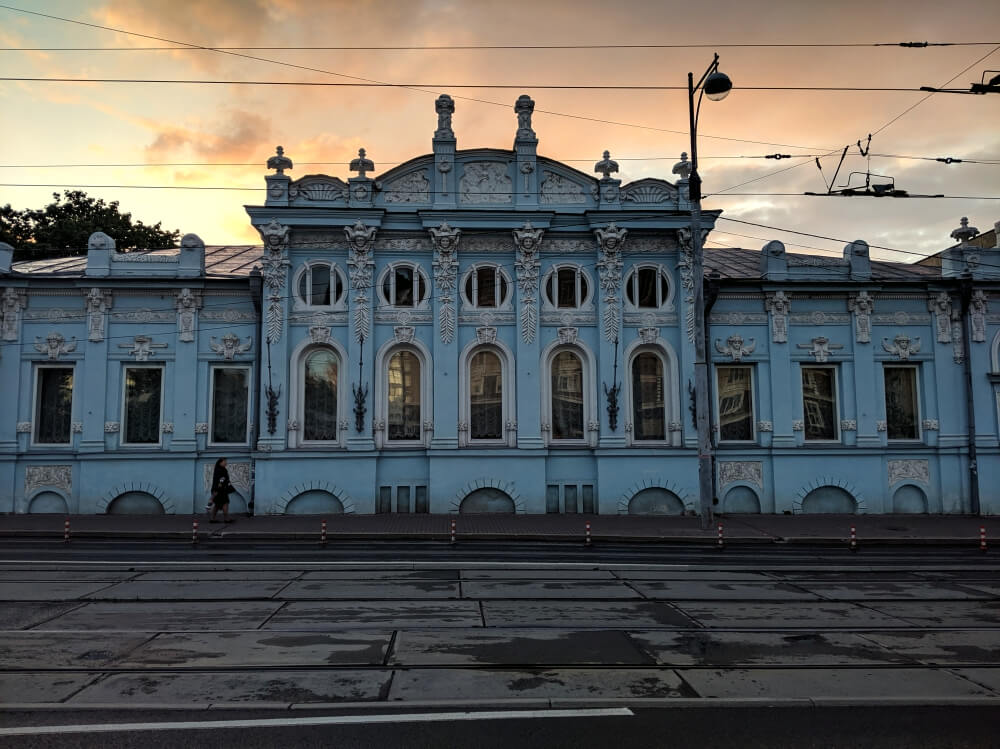
Gribushin House
If you’re a fan of Russian literature, you might also be familiar with Perm for its connection to the novel Dr. Zhivago . I haven’t read it personally, but the author, Boris Pasternak, set the novel in a town based on Perm; on the city’s tourist trail, you can visit several buildings that were the inspiration for locations in the novel. House Gribushin is a great example.
Natural beauty of Perm Krai
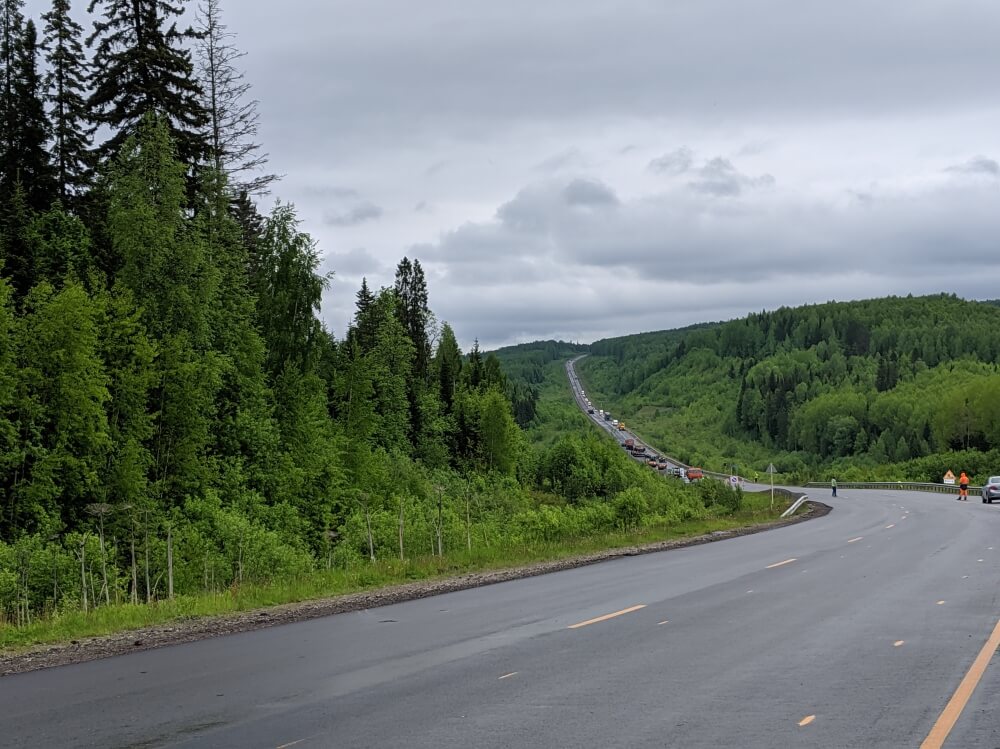
En route to Perm-36 – less than an hour outside of Perm
The city of Perm is found in the Perm Krai (the Perm region), which is roughly two-thirds the size of the UK, with a population of less than three million. We drove through just a tiny portion of the area to reach Perm-36, but even on this short drive, I was taken by just how beautiful and green Perm Krai is . As I mentioned in my blog post about Ulan-Ude , I didn’t manage to take as many day trips out of cities and I wanted, but it looks like there are a lot of possibilities to get out and see more of Perm Krai, if you have the time. Tour companies like Evrasia Tours have some amazing options if you are looking for day trips from Perm. I would have loved to explore more and maybe done some hiking in the north of the region.
Perm architecture
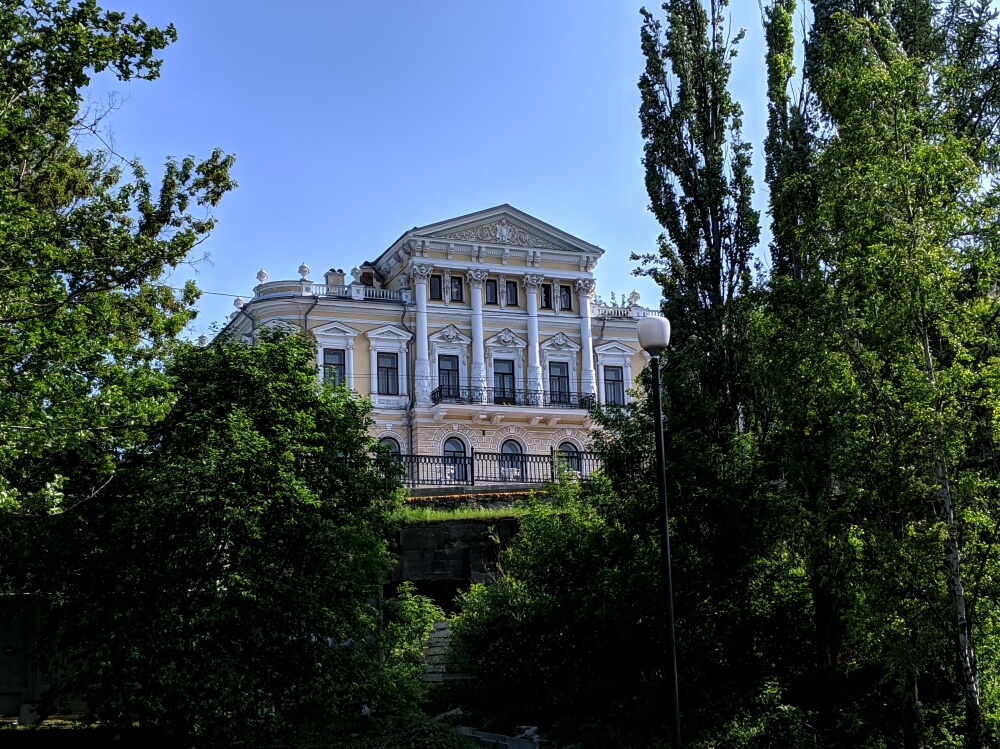
One of the beautiful riverside mansions in Perm
Perm is genuinely a really pretty city in my opinion: walking around and appreciating some of the city’s architecture is one of the nicest things to do in Perm. The main streets in the city centre have some beautiful buildings, typical of the more European-style from the Russian empire. (Of course there are plenty of Soviet high-rises, too.) If you follow the green tourist trail, you’ll be led around some of the city’s nicest buildings, but those along ul. Lenina are particularly picturesque. The old train station (Perm I) and the mansions along the river are other standouts.
PERMM – The Museum of Modern Art
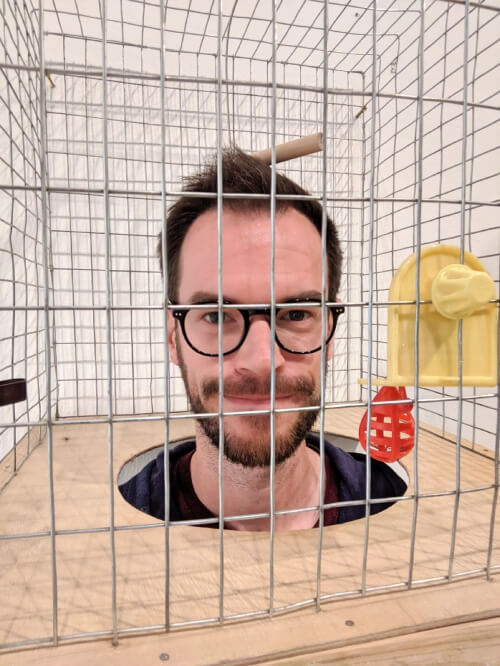
Getting interactive at PERMM
Chances are, if you’re thinking of visiting Perm, you’ll have already read about PERMM , an art gallery which Lonely Planet touts as one of the few subversive spaces in Russia. I have to admit, I’m not the biggest fan of art (modern or classical), but I would say that this impressive space is probably worth checking out. The exhibition when I visited was fairly out-there , but still something that I could enjoy . And while the museum is probably a lot less controversial than it might have been (PERMM’s founder and curator was removed in 2013 for poking fun at the Sochi Winter Olympics), it’s still a very cool, independent museum of art and one of the best things to do in Perm.
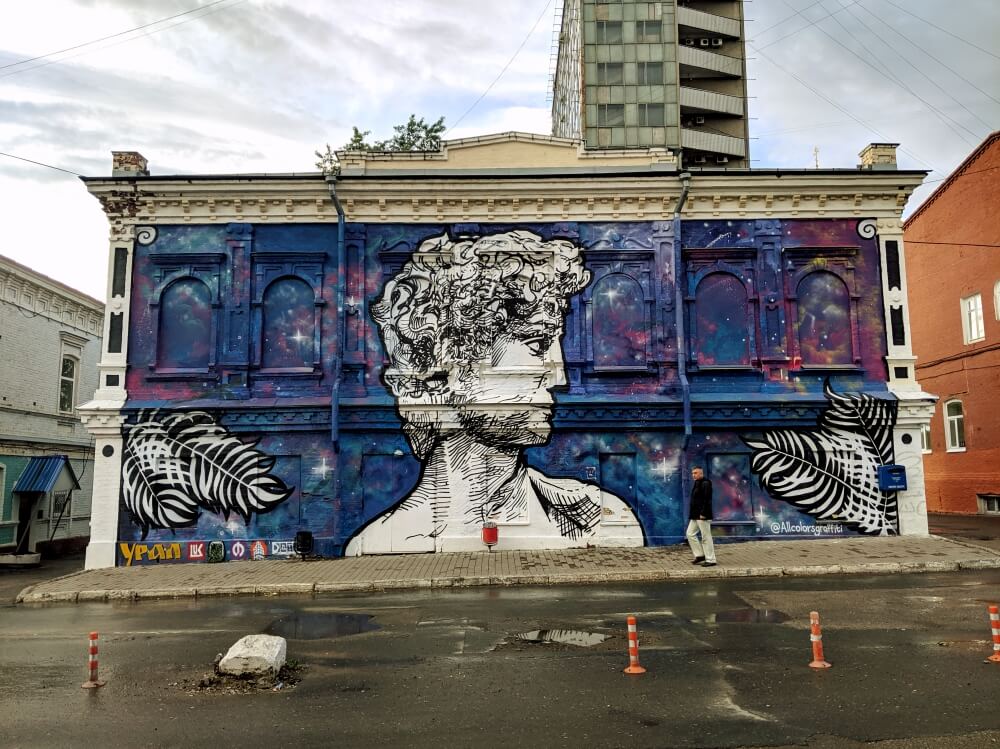
On my way to my amazing meal at Ris-Lapsha (see above), I stumbled upon a really cool area that was full of street art, which isn’t the most common sight in Russia. I’m not sure if this was a designated graffiti zone or something, but the art looked VERY professional ( and very instagrammable ). The area was the short, pedestrianised stretch of ul. Permskaya, roughly from number 55-67.

Cologne meets Perm
Now one of the weirdest moments of my trip – or quite possibly my life – was when I happened to glance up from my phone on the tram, just as we travelled past a Kölsch bar. Now, for those of you who don’t know, Kölsch is a special type of beer native to the city of Cologne (where I live). I had genuinely no idea this bar existed and found it by pure chance.
I went back later to find that not only was the bar dedicated to the beer, but all things Cologne. The inside was decked out in red and white (the city colours), there were prints of Cologne cathedral on the walls and emblems for the local football team FC Köln everywhere. I was in heaven. A home away from home.
‘Happiness is not behind the mountains’
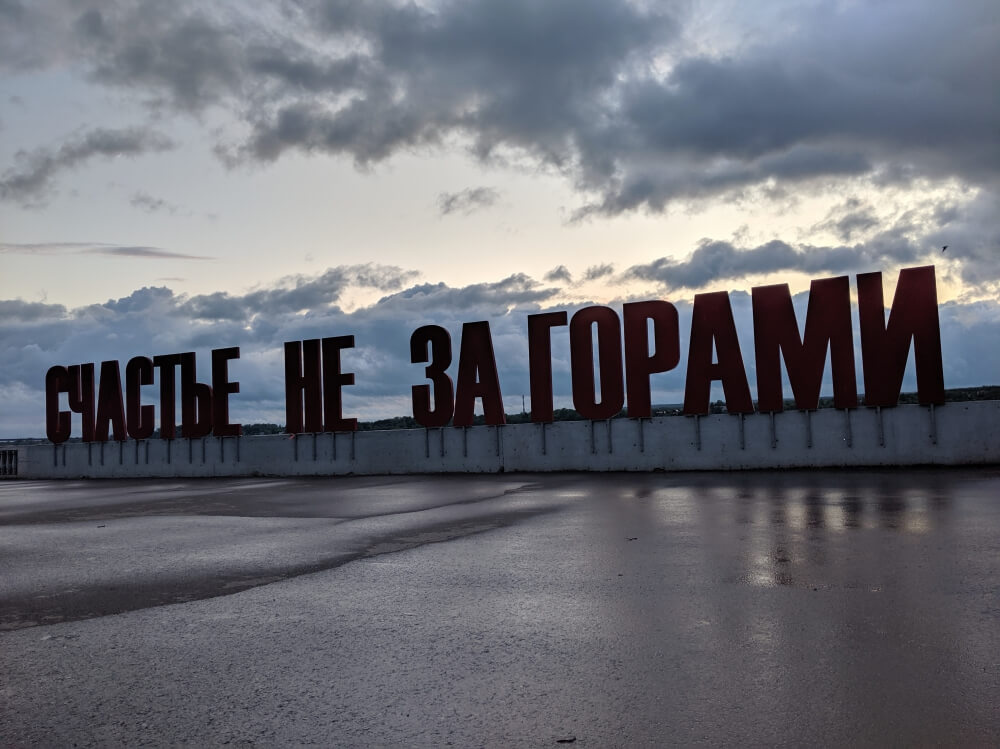
“Happiness is not far away”: the new symbol of Perm
Everybody loves a good local landmark. Even better when that landmark can easily and frequently be instagrammed. Luckily, Perm has just that; a sign on the banks of the Kama river, which means ‘ Happiness is not far away ,’ (but more literally translates to: ‘ Happiness is not behind the mountains’ ) has become the new landmark of the city. The sign is pretty popular for Instagrammers, particularly when the river floods and the letters appear to be floating on the surface of the water. I don’t mind saying I grew very fond of this landmark and must have revisited at least three times to take about one million photos .
Perm was historically the last stop before crossing the Ural mountains into Siberia, the saying has a lot of relevance here. (It also doesn’t hurt that Perm’s rival, Yekaterinburg, is found on the other side of those mountains.)
The friendly bear
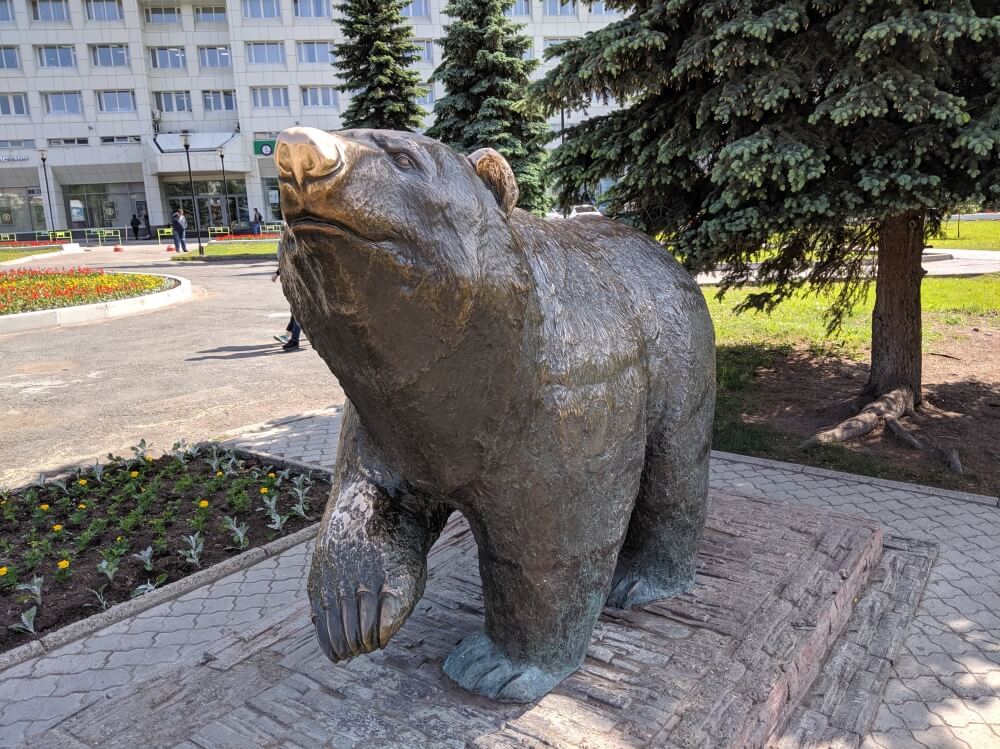
It’s good luck to rub the nose of the Perm bear.
However, the official symbol of the city is actually quite different – it’s a friendly walking bear and is found on the city’s crest. (Big emphasis on the ‘ friendly’ – the bear isn’t a show of strength or aggression but friendship and curiosity.)
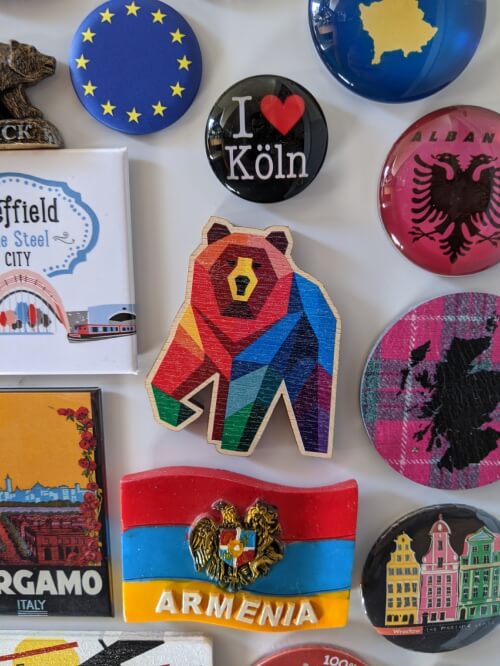
The new friendly walking bear: in magnet form
Now one thing that really appealed to me about Perm was the region’s new branding – including a very artistic take on the friendly, walking bear. In fact, it’s fair to say that the Perm Tourism Board where pretty confused when I rocked up asking if I could buy anything with the bear on it. Instead, they gave me a load of stuff for free, including a very nice magnet, a t-shirt and more leaflets than you could shake a stick at. I am a sucker for nice branding .
The Kama Riverfront
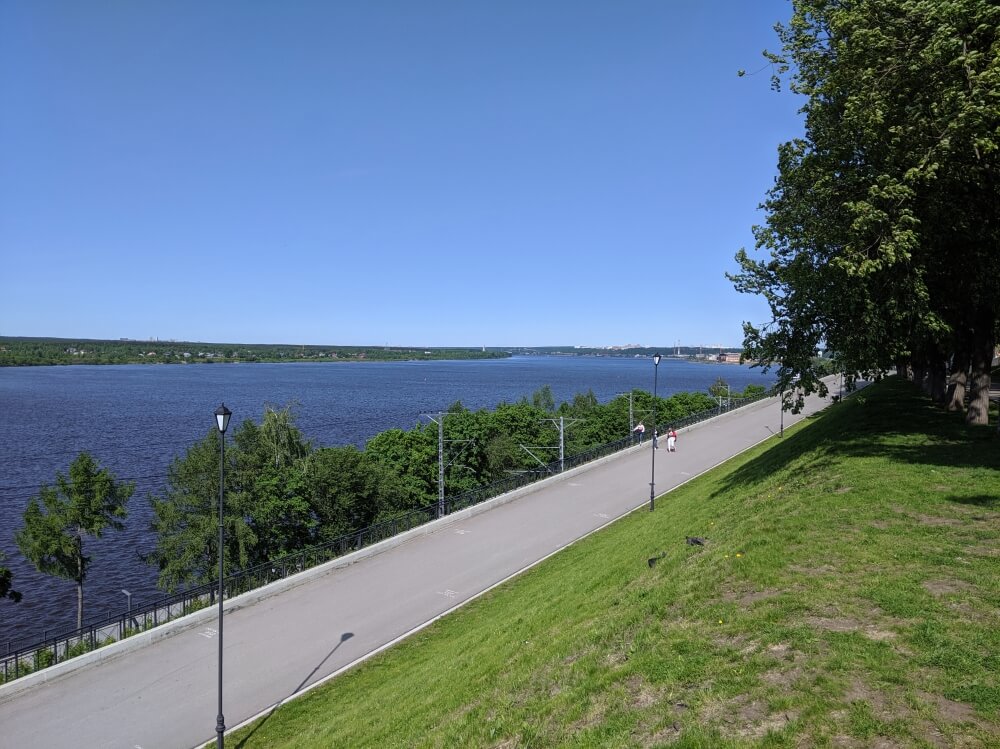
Within the city itself, the Kama river is a great place to spend some time when the sun is shining. One thing that really left a last impression on me from this journey was just the sheer size of Russia’s rivers – the Kama is a relatively short river, but it is huge! The promenade which runs along the river is really well kept – I would recommend taking a leisurely stroll if you are looking for things to do in Perm.
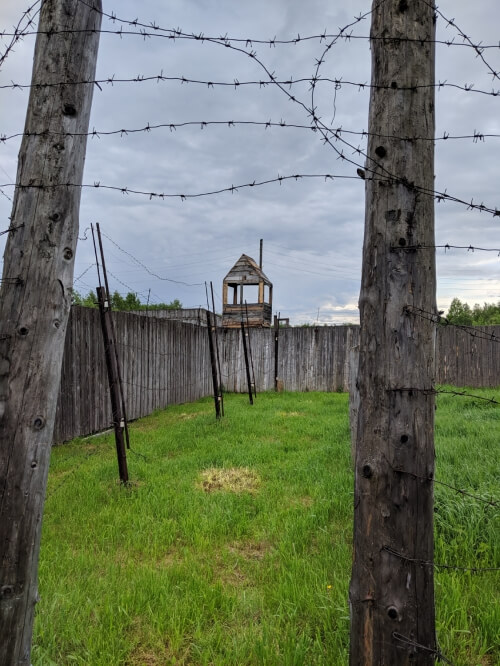
The idea of visiting Perm-36 is what put Perm on my Trans-Siberian itinerary. And I’m sure it’s the same for many other visitors passing through: visiting the former GULAG is probably the #1 thing to do in Perm. Perm-36 is the only preserved GULAG in the entire of Russia and today functions as a museum and memorial site that can be visited on a guide tour from the city.
However, it’s fair to say that if you’ve read A Day in the Life of Ivan Denisovich , Perm-36 will probably feel quite tame. Despite being a forced-labour camp, the political prisoners here were entitled to certain luxuries not permitted elsewhere, allowing for trees and gardens to be grown in the barracks, for example. You can read more about the daily life of prisoners here .
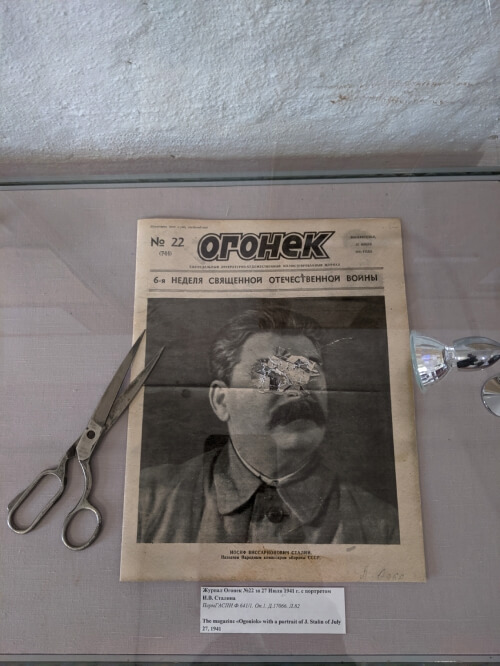
A cleaner at the Perm railway station did this to a photo of Stalin in frustration of not getting a new uniform. She was sentenced to 10 years’ hard labour. Afterwards, she had restrictions on where she could live and work for a further five years.
Visiting is a fascinating look into the Soviet system of punishment – the on-site museum to the Stalinist purges is fascinating and tragic and shows just how casually the deaths of thousands were authorised by one man and his signature. If you are interested in Soviet history, do not miss the chance to visit.
More on the Trans-Siberian:
Heading East: Yekaterinburg: 36 hours in Yekaterinburg: what to see and do
Share this:
- Click to share on Facebook (Opens in new window)
- Click to share on Twitter (Opens in new window)
- Click to share on LinkedIn (Opens in new window)
- Click to share on Pinterest (Opens in new window)
- Click to share on Reddit (Opens in new window)
- Click to share on Tumblr (Opens in new window)
Related posts
Neutral moresnet: the former microstate you've never heard of, visiting latvia's gauja national park in winter, two day siwa itinerary: a guide to the oasis, should you visit eger as a day trip from budapest, like the post subscribe to my newsletter here..
Country United States of America Aaland Islands Afghanistan Albania Algeria American Samoa Andorra Angola Anguilla Antarctica Antigua And Barbuda Argentina Armenia Aruba Australia Austria Azerbaijan Bahamas Bahrain Bangladesh Barbados Belarus Belgium Belize Benin Bermuda Bhutan Bolivia Bonaire, Saint Eustatius and Saba Bosnia and Herzegovina Botswana Bouvet Island Brazil British Indian Ocean Territory Brunei Darussalam Bulgaria Burkina Faso Burundi Cambodia Cameroon Canada Cape Verde Cayman Islands Central African Republic Chad Chile China Christmas Island Cocos (Keeling) Islands Colombia Comoros Congo Cook Islands Costa Rica Cote D'Ivoire Croatia Cuba Curacao Cyprus Czech Republic Democratic Republic of the Congo Denmark Djibouti Dominica Dominican Republic Ecuador Egypt El Salvador Equatorial Guinea Eritrea Estonia Ethiopia Falkland Islands Faroe Islands Fiji Finland France French Guiana French Polynesia French Southern Territories Gabon Gambia Georgia Germany Ghana Gibraltar Greece Greenland Grenada Guadeloupe Guam Guatemala Guernsey Guinea Guinea-Bissau Guyana Haiti Heard and Mc Donald Islands Honduras Hong Kong Hungary Iceland India Indonesia Iran Iraq Ireland Isle of Man Israel Italy Jamaica Japan Jersey (Channel Islands) Jordan Kazakhstan Kenya Kiribati Kuwait Kyrgyzstan Lao People's Democratic Republic Latvia Lebanon Lesotho Liberia Libya Liechtenstein Lithuania Luxembourg Macau Macedonia Madagascar Malawi Malaysia Maldives Mali Malta Marshall Islands Martinique Mauritania Mauritius Mayotte Mexico Micronesia, Federated States of Moldova, Republic of Monaco Mongolia Montenegro Montserrat Morocco Mozambique Myanmar Namibia Nauru Nepal Netherlands Netherlands Antilles New Caledonia New Zealand Nicaragua Niger Nigeria Niue Norfolk Island North Korea Northern Mariana Islands Norway Oman Pakistan Palau Palestine Panama Papua New Guinea Paraguay Peru Philippines Pitcairn Poland Portugal Puerto Rico Qatar Republic of Kosovo Reunion Romania Russia Rwanda Saint Kitts and Nevis Saint Lucia Saint Martin Saint Vincent and the Grenadines Samoa (Independent) San Marino Sao Tome and Principe Saudi Arabia Senegal Serbia Seychelles Sierra Leone Singapore Sint Maarten Slovakia Slovenia Solomon Islands Somalia South Africa South Georgia and the South Sandwich Islands South Korea South Sudan Spain Sri Lanka St. Helena St. Pierre and Miquelon Sudan Suriname Svalbard and Jan Mayen Islands Swaziland Sweden Switzerland Syria Taiwan Tajikistan Tanzania Thailand Timor-Leste Togo Tokelau Tonga Trinidad and Tobago Tunisia Turkey Turkmenistan Turks & Caicos Islands Turks and Caicos Islands Tuvalu Uganda Ukraine United Arab Emirates United Kingdom Uruguay USA Minor Outlying Islands Uzbekistan Vanuatu Vatican City State (Holy See) Venezuela Vietnam Virgin Islands (British) Virgin Islands (U.S.) Wallis and Futuna Islands Western Sahara Yemen Zambia Zimbabwe
I seriously had no idea this city was such a gem!
It was such a great place to spend some time in! I expected to like it, but I was still really surprised how much. I would happily re-visit and spend some time exploring the Krai. Would fully recommend it for a weekend.
They also play metal in public
Leave a Reply Cancel reply
Your email address will not be published. Required fields are marked *
Sign me up for the newsletter!
Notify me of follow-up comments by email.
Notify me of new posts by email.
I’m John – part-time traveller, blogger, British expat and general mastermind behind JohntheGo, a blog celebrating city breaks, budget trips and part-time travel. More about me .
Trending now
Privacy Overview
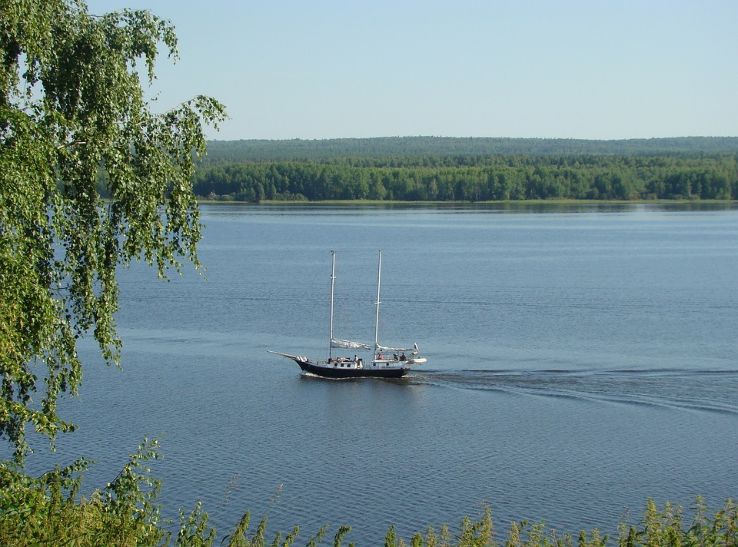
Things to do in Perm
- About Kama River
The Kama is a noteworthy stream in Russia, the longest left tributary of the Volga and the biggest one in release; it is bigger than the Volga before their intersection.
It begins in the Udmurt Republic, close Kuliga, streaming northwest for 200 kilometers 120 mi, turning upper east close Loyno for another 200 kilometers 120 mi, at that point handing south and west over Perm Krai, streaming again through the Udmurt Republic and after that through the Republic of Tatarstan, where it meets the Volga. The Kama is 1,805 kilometers 1,122 mi long.
The Kama River in the city of Perm. Prior to the coming of the railways, the Kama was associated by critical portages with the bowls of the Northern Dvina and the Pechora.
Download Travel Checklist for Kama River
Kama river rating & reviews, tour package by.
Member Since 2022
Similar Activities in Perm Krai
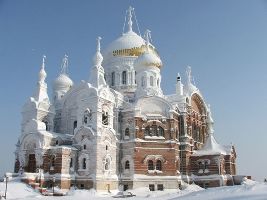
The Belaya Gora
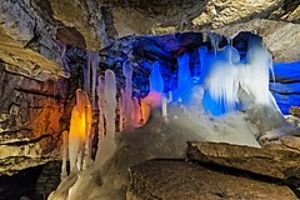
The Kungur Ice Cave

The Gulag Camp
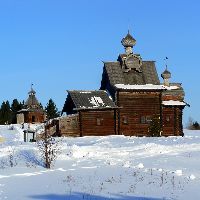
Khokhlovka Open Air Museum
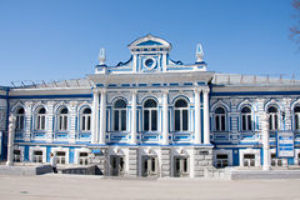
The Young Spectator Theatre
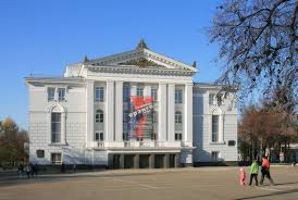
Opera and Ballet Theatre
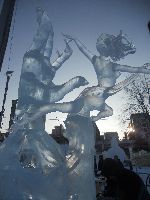
Perm International Snow and Ice Sculpture Festival
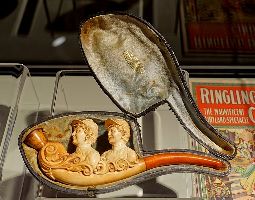
Unique Russian museum of spoons
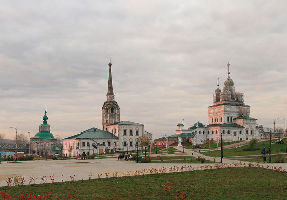
Trinity Cathedral
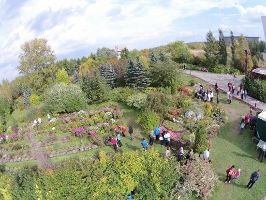
G. A. Demidov Memorial Botanical Garden
Similar activities in russia, fish market, eagles nest hill, primorsky aquarium, tiso-samshitovaya roshcha, vorontsovka caves, russian steam bath, laika monument, tulskiy pryanik, house with animals, orlinyye skaly, aquarelle train on the moscow metro, similar activities outside russia, seven sisters falls, tungabhadra dam, glass skywalk, dawki river, a romantic dinner on a cruise in mumbai, nagarjuna sagar dam, nallamala forest, shimla toy train ride, manjolai hills, tada falls / ubbalamadugu falls.
- Enquiry Form
To City (Destination)
Travel Date
Travel Duration (In Days)
Travel With
Type of Trip
Total Budget (in INR)
Ticket Booked ?
Ticket Required?
Mode of Transport
Ticket Category
I will book
Date of Birth
Marital Status
Income (Per Month)
Nationality
Preferred Language
Total countries visited so far
Do you have a Visa ?
Do you have a Passport?
Preferred Time to Call
We have identified additional inquiries related to your tour. Please review them and let us know if there are any inquiries you would like us to remove.
1,00,00,000+
You are using an outdated browser. Please upgrade your browser to improve your experience.
Perm, Russia General info on the city of Perm A short intro... Perm is the most Eastern city of Europe, and therefore its province is often referred to as Eurasia. Having a population of 1 million, Perm' is one of the largest cities in Russia and the second largest in the Urals. The city was formerly called Molotov, after the minister of foreign affairs during Joseph Stalin's ruling. Perm stretches 65 km along the impressive Kama River - Europe's 4th largest river by length. The Perm province, "Permskiy Krai", or "Prikamye", is around two-third the size of the United Kingdom and covers a great area in the very heart of the Ural Mountains. Perm is internationally known as the name for the geological period (290 - 245 million years ago) in which the Ural Mountain Range was formed. In contrary to the Urals, Perm itself is rather young. Although the first settlement of Perm dates back to 16th century, officially it got its city status in 1723. Citizens still loudly celebrate Perm's birthday on 12th of June, with street parades, concerts and fireworks throughout the whole city! In spite of being a relatively young city, Perm played an important role in the history of Russia. Not the least part of this role was played by Ermak, who was from the Perm Province. Ermak, by order of the Stroganov family, gathered an army here and led it through the Urals, later to succesfully conquer Siberia for Russia. Afterwards, when a road was needed to connect Siberia with the west, construction was started in Perm, which was at that time the capital of the Ural region. The new road, together with the construction of the Trans Siberian Railroad, allowed development of the places east of the Urals - current big cities such as Ekaterinburg, Omsk and Novosibirsk, were merely peasant or miners' towns by that time. Nowadays, Perm basically owes its existence to two factors. Firstly the large amounts of natural resources (minerals, oil and timber) that are present in the region, and secondly (but not less important): its location. The mighty Kama River, the Great Trans Siberian Railroad and main motorways from Moscow/Kazan to Siberia all cross in Perm, making Perm a main Russian transportation hub. The city is the doorway from Europe to Asia and to Siberia in particular. During Soviet times, Perm was a proper fortress because of the huge military industry in its region. All artillery and rocket vehicles, as well as (intercontinental) ballistic rocket launching systems, engines for MiG jetfighters and canons of all ranges were (and in less proportions still are) produced in Perm. The Soviets did an excellent job in hiding Perm and keeping it secret. Most people from outside the Urals simply did not know of the existence of the - at that time - 1 million citizens of Perm. Until the end of the cold war, Perm did not appear on certain Soviet-made maps, nor did the roads towards it. Nowadays, Perm is obviously accessible to all. Actually, it currently is one of Russia's fastest growing cities because of its economical prosperity. Click here for specific information for visitors: Perm sightseeing / excursions and Perm hotels . Perm - 101% Russian, yet multicultural For Russian standards, Perm is one of the most multicultural places in the whole country; it is a home of many ethnic groups who have lived together in Perm ever since its existence. While taking a walk through Perms huge central bazaar one can easily distinguish Russians at the many typical small kiosks, Georgians and Armenians selling their original spicy kebabs and shoarmas straight from the barbecue and Tatars operating from most of the simple but colorful jewelry stands. Furthermore, Russian orthodox churches, a mosque, a synagogue and several Catholic churches (some dating from the 17th century) all exist next to each other in Perm. The multicultural character of Perm also shows in its dining possibilities; one does never have to go far to experience the Russian, Uzbek, Georgian or Caucasian cuisine. In spite of its multicultural character, Perm is Russian till the bone. Wide avenues, big squares and parks, many statues, dominant Soviet architecture, countless little kiosks, huge theatres and trolley busses everywhere - all make Perm as Russian as Russian can be. Being some 1400 kilometers away from the big influential cities of Moscow and St. Petersburg, Perm is a relaxed place, where people have kept the typical Russian way of life and traditions. The Perm opera and ballet theatre After St. Petersburg and Moscow, Perm is Russia's leading city for opera and ballet theatre. Not only has the city got a wide range of stages and theatres, its educational bodies like the Russian Academy of Theatre Art and Institute for Culture and Art as well as its many international relations in theatre performances and education still give Perm the name of theatre city. One of the most famous stages is the Chaikovsky Opera and Ballet Theatre Perm. Among its repertoire are internationally known performances (for example Romeo and Juliet, Cleopatra, Aida, Cinderella, Le Nozze di Figaro) as well as Russian ones: most works of Chaikovsky have been staged here. Since 1948 the Perm Opera and Ballet Theatre has been on tours throughout the whole world, performing in countries such as UK, Japan, New Zealand, Australia, Hungary, the Netherlands, Bulgaria, Germany and China. During its history, the theatre has received numerous (inter)national prizes. Another leading stage is the Perm Academic Drama Theatre, founded in 1927. Like the Perm Opera and Ballet Theatre, the Acamedic Drama Theatre has staged the worlds most prestigious Drama plays (for instance Ostrovsky, Shakespeare, Gorky and Tolstoy) and has it won many prizes for its work. Museums The Perm Art Gallery boasts a large collection of arts. Apart from numerous paintings of Flemish, French and Italian masters, it also has modern art collections on exhibition. The museum's collection is among the very largest ones in Russia. The museum is located in a former cathedral, now a landmark of Perm in the centre of the city. For those who are interested in the history and the culture of the Urals, the Regional Museum of Local Studies and History (founded in 1890) is definitely worth to visit. The museum boasts a wide variety of armory, coinage, pottery, handicrafts, archeology and minerals. It also tells about the Permian period, the geological era in which the Urals were formed. The partly open-air artillery museum at the northern end of the city centre displays all generations of rocket and artillery (vehicles), as constructed in Perm, as well as a wide range of information of the history of the industry. Actually, the city is known for its large war industry ever since late 1800s. All cannons and artillery of former Soviet Union as well as engines for Tupolev and MiG aircrafts were (and in less amounts still are) manufactured in Perm. The museum offers detailed information on its wide range of warfare. The outside part of the museum can be entered free of charge at any time. This museum is a part of our city excursion . Khokhlovka (Open-air museum of and Wooden Architecture and Ethnography) is in fact a collection of original structures as they existed in the 17th century. Inside the buildings, all kinds of tools, handicrafts and clothes of that time are exposed. The guide will take you around the museum, telling about the hard life 300 years ago. You will be amazed by the beauty of the site; Khokhlovka is located on a green hill and offers great views over the Kama river and nearby villages. Architecture As for architecture, most profound buildings are situated in the city centre. The heart of the city is very unlike what one can expect from a city of over one million inhabitants. It completely lacks the usual modern glass buildings and tall skyscrapers that make up for most big cities centres. In fact, Perms centre is mostly made up by colorful, classic 3-storied mansions of Soviet architecture, making the centre breath a rather relaxed and pleasant atmosphere. Among the most prominent buildings in the city are the centrally located "Young people's theatre", the Feodalyevskaya Church and the Dyagiliev Mansion. Furthermore, the Perm I train station is worth a look, as it is proper ancient (17th century). In the provincial towns surrounding Perm, such as Kungur, Solikamsk, Usolye and Osa, architectural highlights are dominated by mansions and factories which were built by the Stroganovs and Demidovs in the 17th century. In similar style, a large number of remarkable churches and cathedrals can be found throughout the Perm Province. Famous people In spite of Perm being a relatively unknown city, the city and its region brought forward many famous people. Ballet impressario Sergei Dyaghilev was born in Perm and spent early years of his life here. He became a sensation in Europe during 2 decades of his "Ballets Russes". Dyaghilev's former mansion in the centre of Perm is now a museum. Chaikovsky, one of the greatest composers ever, was born in a small town just south of Perm. Furthermore, Perm was home of Popov, the inventor of radio, and of Boris Pasternak, who wrote Dr. Zhivago here. The Stroganovs, the Demidovs and Tatishchevs in Perm make up for Russia's famous industrials. Ballet impresario Sergei Diaghilev wrote history when he produced the ballet sensation "The Rites of Spring" in Paris in the early years of the 20th century. Sports For those who are more into sports rather than theatre, Perm has many possibilities. Especially in weekends, the offer is large. Football games of Amkar (promoted to Russias premier league in 2003) and Molot-Prikamiye (see club logo on the right) ice hockey matches take place frequently. Click here for all matches of Perm sports teams. Shopping Shopping in Perm is an experience on its own. Like most other cities in Russia, Perm has not got obvious Western-style shopping streets, although the central Komsomolsky Prospekt is steadily developing into one. New and modern stores are appearing in and around this proper avenue at a fast rate, among which mostly fashion, jewelry and dining places. For daily needs, the huge central bazaar is the most popular place. For any tourist, a visit to this site of countless little stands, shops and kiosks simply cannot be missed. The whole city comes together here, making the bazaar probably the most vivid place in Perm. Fruits, vegetables, clothes, cleaning products, tools, audio, sunglasses, kebabs, carpets, almost ANYthing can be purchased here, and usually for very little money too. The large building in the centre of the bazaar is the place where all kinds of meat and milk products are sold. For those looking for cheap clothing, the Chinese-Vietnamese market is the place to go. Decent but cheap is the main subject among the mainly Chinese trade-people at the market. Furthermore, several smaller markets (rinki) can be found all over the city, mainly at the crossings of major streets. A number of shopping malls serve those who like to have everything in one building. The biggest one is Univermag on the corner of Lenina and Komsomolsky Prospekt. Just across the road are many bakeries, cafés and kebab stands for a short break and a quick snack. Public Transport Perm has an extensive public transport system, operated by busses, taxi busses, trolley busses and trams. They take you to wherever you want to go in the city, even to far outskirts. The standard fare for any means of public transport is 13 rubles, to be paid to the conductor on entrance. Taxi busses start around 6:30 am and stop at 21 pm. All the other transport starts at 5:30 am and goes until 0:30 am. Taxis, naturally, drive 24 hours. If you do not know the city well, it might be difficult for you to find your way through the complicated public transport network. The best thing you can do is to ask the hotel receptionists or your host family which bus or tram number you need. Just remember the name of the stop you departed from, so it will be easy for people to give you directions back, just in case you are not sure which one to take. It is also possible to buy a city transport map at any paper/magazine kiosk, they cost around 2 euro. Events in Perm Events in form of sports and theatre take place nearly every day, one shall not get bored! Most interesting performances of ballet, drama and opera are staged at the Drama Theatre, which is located on Lenina Street, at the central square. The Perm Academic Theatre offers all kinds of famous plays, both Russian and international, and has a full events calendar every day of the month. Matches of Molot Prikamye (ice hockey) take place at the Molot Stadium, which is loacated in the eastern part of Perm. Amkar plays Russian premier league football in stadium "Zvezda", which is in the city centre. Celebrations throughout the city often take place on Russian national holidays: December 31st, New Year January 7th, Orthodox Christmas February 23rd, Day of Defender of Motherland (fireworks) March 8th, Women's Day May 1st, Spring and Labour Day May 9th, Victory Day (military parades in city centre) June 12th, Independence Day and birthday Perm city! (huge fireworks at midnight) November 4th, National Accord Day Furthermore, several occasional as well as annual music, theatre, folklore and anniversary festivals take place in Perm and its region. There is always something to celebrate in Perm! Perm city map A map of Perm city centre, as well as a province map, you'll find on a seperate page. Click here for Perm city map . Perm Weather & Climate Russia is renowned for its long and cold winters. In case of Perm in particular, this is only partly true. Perm has a temperate continental climate: winters are by far not as harsh (average day temperature in January is -15C) when compared to the more eastern parts of the country. Summers are usually very sunny and warm, averagely +25C in July- and August day times. During those months, many citizens can be found sunbathing on the Kama beaches. Current weather: -->

IMAGES
COMMENTS
Performs also approved special transport of wheelchair users. We firmly scheduled sightseeing tours 2 times a day, booked through this website or at the reception at the place you live in Longyearbyen. Private tours / larger groups please send us an request. Taxi booking: + 47 79 02 13 05. E-mail: [email protected]. Refine search.
Longyearbyen Private Transfer from Longyearbyen city to Longyearbyen airport. 1. Airport & Hotel Transfers. from. $165.20. per group (up to 3) Svalbard Discover the Mining Settlement of Pyramiden. Full-day Tours. from.
Longyearbyen in a nutshell - sightseeing with the local expert - Svalbard Buss og Taxi. Type: Sightseeing. 9171, Longyearbyen. Website. Email. Tel: +47 79 02 13 05. Book Tickets Online. Available. Season (1 Jan 2024 - 31 Dec 2024) Day Times; Monday - Sunday: ... The tour goes near: the local mines, research, town, church and past the global ...
Read our transparency report to learn more. The taxi service in Svalbard is good and efficient. If the traveler wants to move quickly from A to B in Svalbard, a phone call is all it takes and the taxi will be there. The drivers are friendly and you can pay quickly and easily with your cell phone or credit card.
Svalbard Maxi Taxi offers daily tours at 10 a.m. and 4 p.m. The afternoon tour tends to be less rushed due to incoming flight schedules. Space is limited to 12 people, so booking in advance is recommended. For more info, visit taxiguiden.no or call +47 - 79 02 13 05. Published on Thursday, August 7, 2014.
Longyearbyen in a nutshell - sightseeing with the local expert - Svalbard Buss og Taxi. Book Add to favorites. Contact. Two-hour guided trip - The perfect way to get an overview of Longyearbyen. ... The tour goes near: the local mines, research, town, church and past the global seed vault. There are stops along the way for photography.
Svalbard Buss og Taxi: Amazing tour - See 186 traveler reviews, 65 candid photos, and great deals for Longyearbyen, Norway, at Tripadvisor.
Svalbard Buss og Taxi, Longyearbyen: See 181 reviews, articles, and 65 photos of Svalbard Buss og Taxi, ranked No.9 on Tripadvisor among 9 attractions in Longyearbyen. ... This tour is almost a must for anyone who wants to visit Svalbard. Spend a day in town, take the tour, and leave the other activities for day two! Read more. Written 28 March ...
Svalbard Buss og Taxi, Longyearbyen: See 186 reviews, articles, and 65 photos of Svalbard Buss og Taxi, ranked No.10 on Tripadvisor among 10 attractions in Longyearbyen. ... A tour around the town then up to the satellite station and Mine number 7 then a look at the Global seed bank plus loads of interesting stops along the route.
Svalbard Villmarkssenter - Day Tours. 97. Boat Tours • Sightseeing Tours. By Sakuralice. I was looking for a ride with huskies and found the tour where you can also drive the cart. 15. Svalbard Experts. 23. Sightseeing Tours.
May 28, 2024 - Find & Book the top-rated and best-reviewed tours in Svalbard for 2024. From prices and availability to reviews and photos, Tripadvisor has everything you need to create that perfect itinerary for your trip to Svalbard. ... Svalbard Bus and Taxi. 14. Historical & Heritage Tours • Sightseeing Tours. By morningsglory.
Arranged by Svalbard Buss og Taxi. Two-hour guided trip - The perfect way to get an overview of Longyearbyen. The driver tells us about the major local attractions and history of Longyearbyen. The tour goes near: the local mines, research, town, church and past the global seed vault. There are stops along the way for photography.
Taxi Tours: The best way to get an overview of Longyearbyen. The driver can tell you about the history of Longyearbyen and some major local attractions. Biking Tours: You can join biking tours in Svalbard that offer a glimpse of the Arctic's natural beauty, complete with fjords, mountains, and potential wildlife sightings. You'll pass by ...
Besichtigung - Svalbard Maxi Taxi. Two-hour guided trip - The perfect way to get an overview of Longyearbyen. The driver tells us about the major local attractions and history of Longyearbyen. The tour goes near: the local mines, research, town, church and past the global seed vault. There are stops along the way for photography.
One of the easiest and most popular ways to visit Svalbard Global Seed Vault is to join the tour called " Longyearbyen in a nutshell ". This 2 hour trip takes you around the city, and includes a stop outside the entrance to Svalbard Global Seed Vault. Another option is to join the " Seed to Summit " trek, which is a 4 hour hiking trip ...
Longyearbyen is a small town, and walking around downtown Longyearbyen is a wonderful experience. There are also two taxi companies ready to take you around town, into the valley, between the town centre and Nybyen, and to the airport. Longyearbyen Taxi and Svalbard Bus and Taxi are at your service 24/7. Svalbard Buss and Taxi can also offer ...
1. Svalbard Buss og Taxi. Not only is their transportation prompt and effective, but they are incredibly kind and helpful. 2. Limowide. 3. Norway Airport Transfers. Top Svalbard Taxis & Shuttles: See reviews and photos of Taxis & Shuttles in Svalbard, Norway on Tripadvisor.
Perm architecture. One of the beautiful riverside mansions in Perm. Perm is genuinely a really pretty city in my opinion: walking around and appreciating some of the city's architecture is one of the nicest things to do in Perm. The main streets in the city centre have some beautiful buildings, typical of the more European-style from the ...
Longyearbyen Private Transfer from Longyearbyen city to Longyearbyen airport. 1. Airport & Hotel Transfers. from. £128.49. per group (up to 3) Svalbard Discover the Mining Settlement of Pyramiden. Full-day Tours.
Opera and Ballet Theatre. 5.0. Enquire Now. Perm Krai, Russia. Perm International Snow and Ice Sculpture Festival. 4.5. Enquire Now. Perm Krai, Russia. Unique Russian museum of spoons.
Traffic. This HD live webcam takes you to the city Solikamsk in the Russian Perm Krai. The online stream shows you the intersection of the major street Severnaya and Molodezhnaya street, including the local time and weather in Solikamsk. This city is one of the oldest towns in the Krai, with a rich heritage seen in many historical buildings ...
Since 1948 the Perm Opera and Ballet Theatre has been on tours throughout the whole world, performing in countries such as UK, Japan, New Zealand, Australia, Hungary, the Netherlands, Bulgaria, Germany and China. ... Taxi busses start around 6:30 am and stop at 21 pm. All the other transport starts at 5:30 am and goes until 0:30 am. Taxis ...